Parterre gardens bring timeless elegance and geometric beauty to outdoor spaces through carefully arranged beds and pathways. These formal French-inspired designs transform any yard into a sophisticated landscape featuring symmetrical patterns, clipped hedges, and ornamental plantings. From traditional boxwood borders to modern interpretations using alternative plants, parterre gardens offer endless creative possibilities for both small urban courtyards and expansive country estates. Whether filled with seasonal flowers, aromatic herbs, or productive vegetables, these structured garden designs provide year-round visual interest while serving practical purposes. The key lies in selecting appropriate plants, creating balanced proportions, and maintaining clean lines that showcase the garden's architectural beauty.
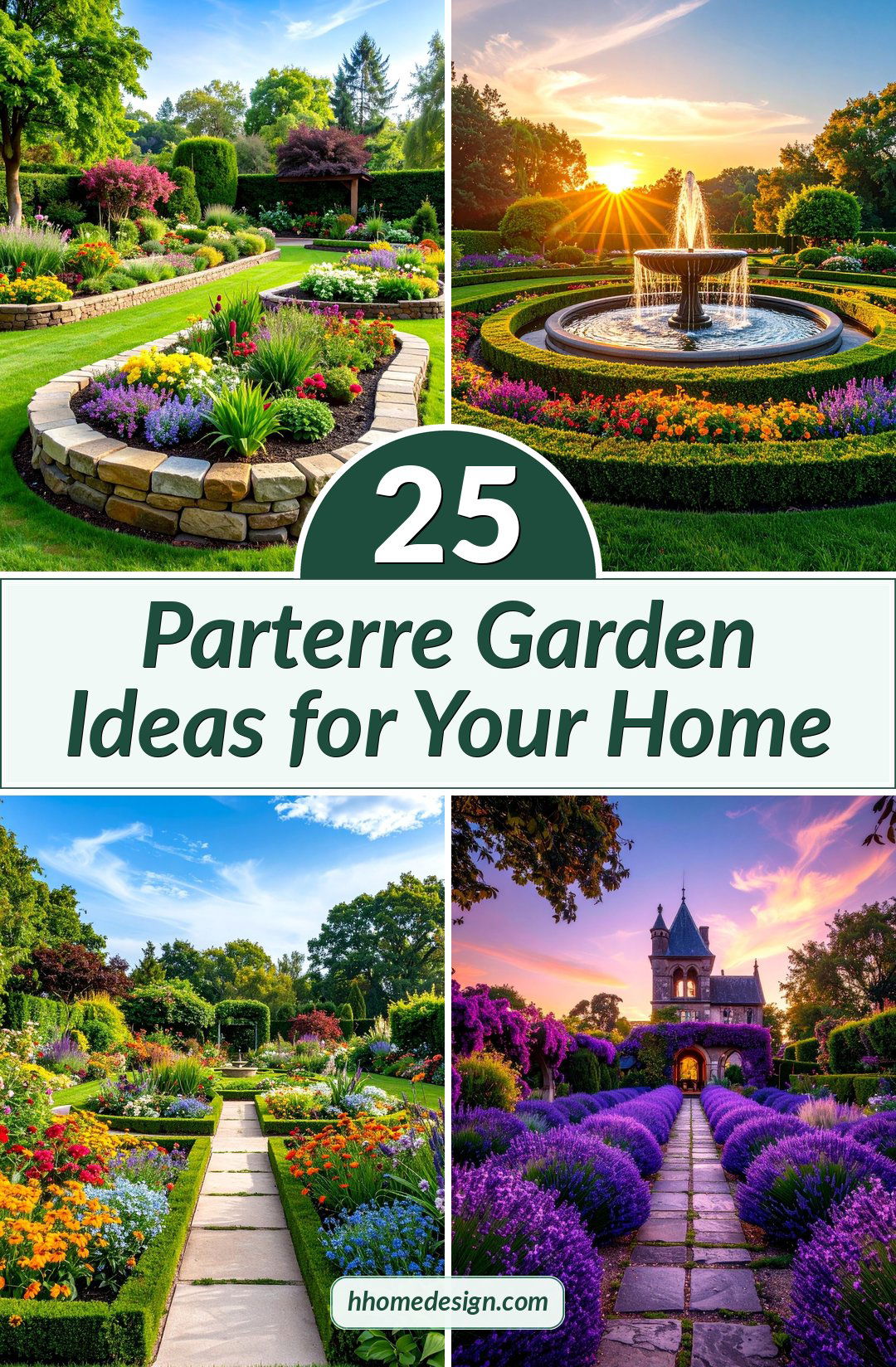
1. Classic Boxwood Parterre with Seasonal Annuals
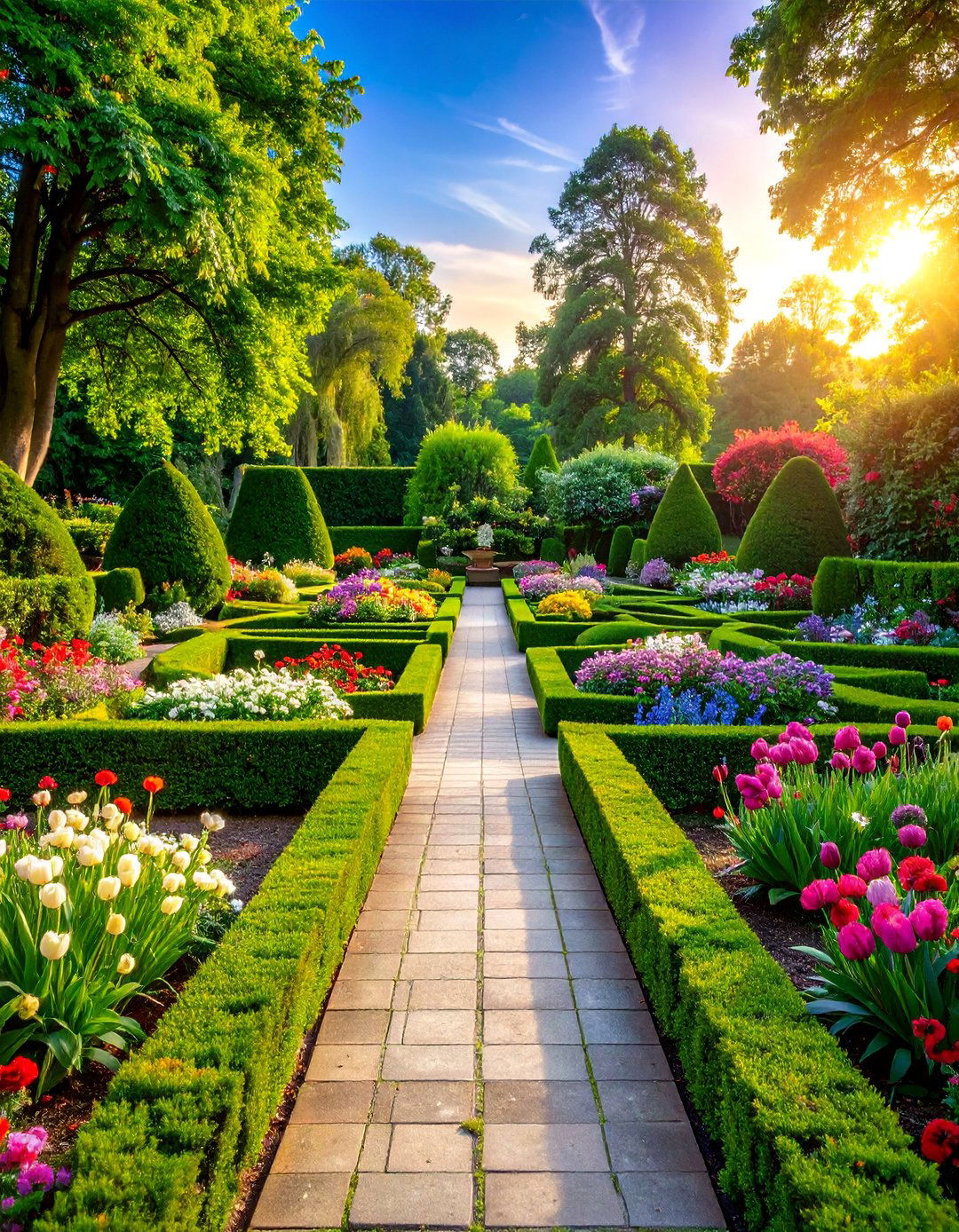
Traditional boxwood hedging creates the foundational structure for this timeless parterre design, featuring precisely clipped borders that frame geometric beds. Inside each compartment, seasonal annuals provide vibrant color throughout the year, from spring tulips and daffodils to summer petunias and autumn chrysanthemums. The evergreen boxwood maintains the garden's formal appearance during winter months, while the changeable interior plantings offer flexibility for different color schemes and seasonal displays. This design works exceptionally well when viewed from upper story windows or elevated terraces, showcasing the intricate patterns below. Regular maintenance includes bi-annual hedge trimming and replanting seasonal displays to ensure continuous visual appeal.
2. Parterre Garden with Dwarf Yew Borders
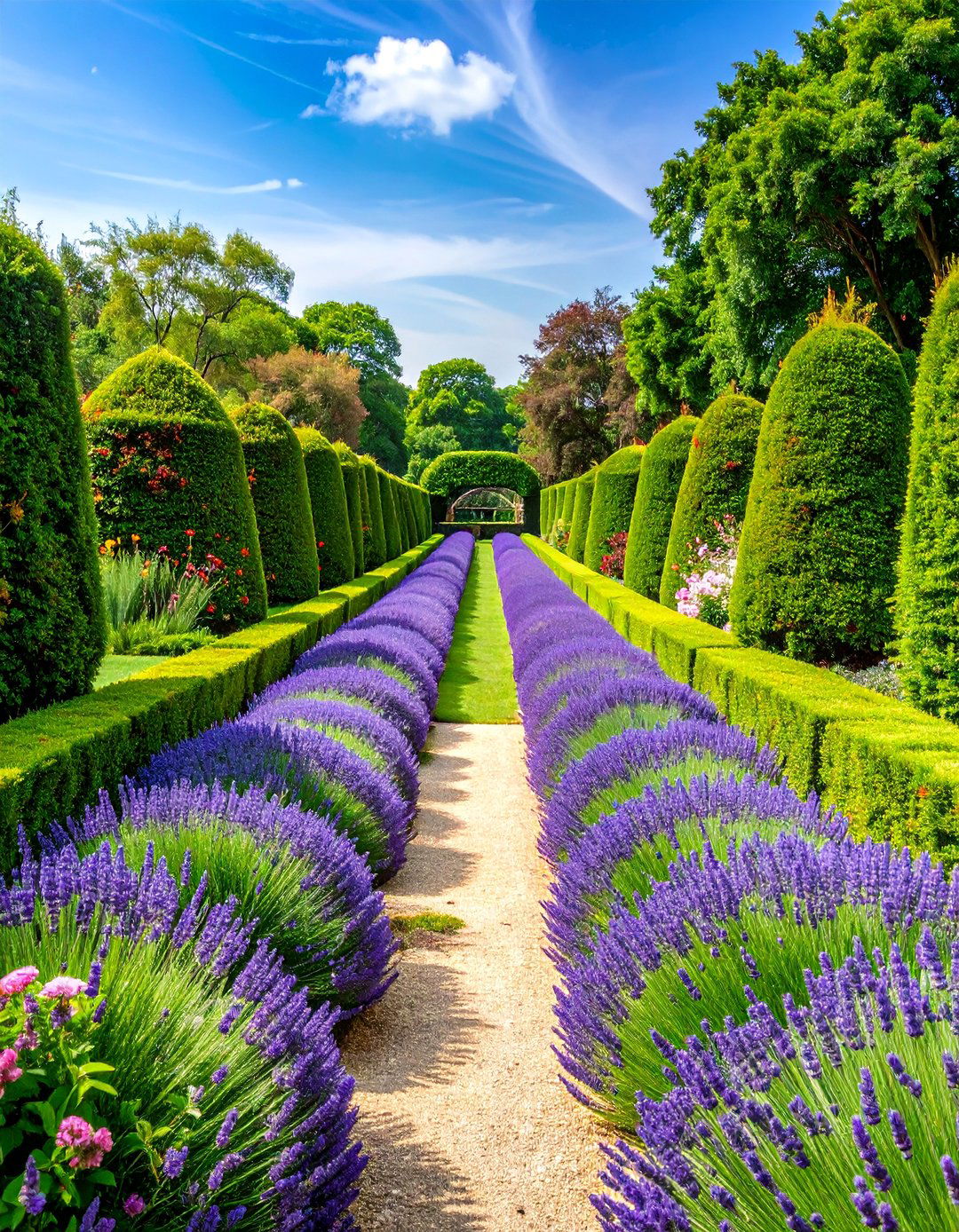
English yew provides an excellent alternative to boxwood, offering dense, fine-textured foliage that responds beautifully to precise clipping and shaping. This hardy evergreen creates crisp, formal borders that can be maintained at various heights, from low edging to taller hedging for larger gardens. Yew borders frame beds filled with fragrant lavender, ornamental grasses, and perennial flowers that complement the deep green backdrop. The slow-growing nature of yew ensures long-term structural integrity, while its tolerance for heavy pruning allows for creative topiary elements within the design. This combination creates a sophisticated garden that balances formal structure with natural textures and seasonal color variations.
3. Herb Parterre with Aromatic Plant Borders
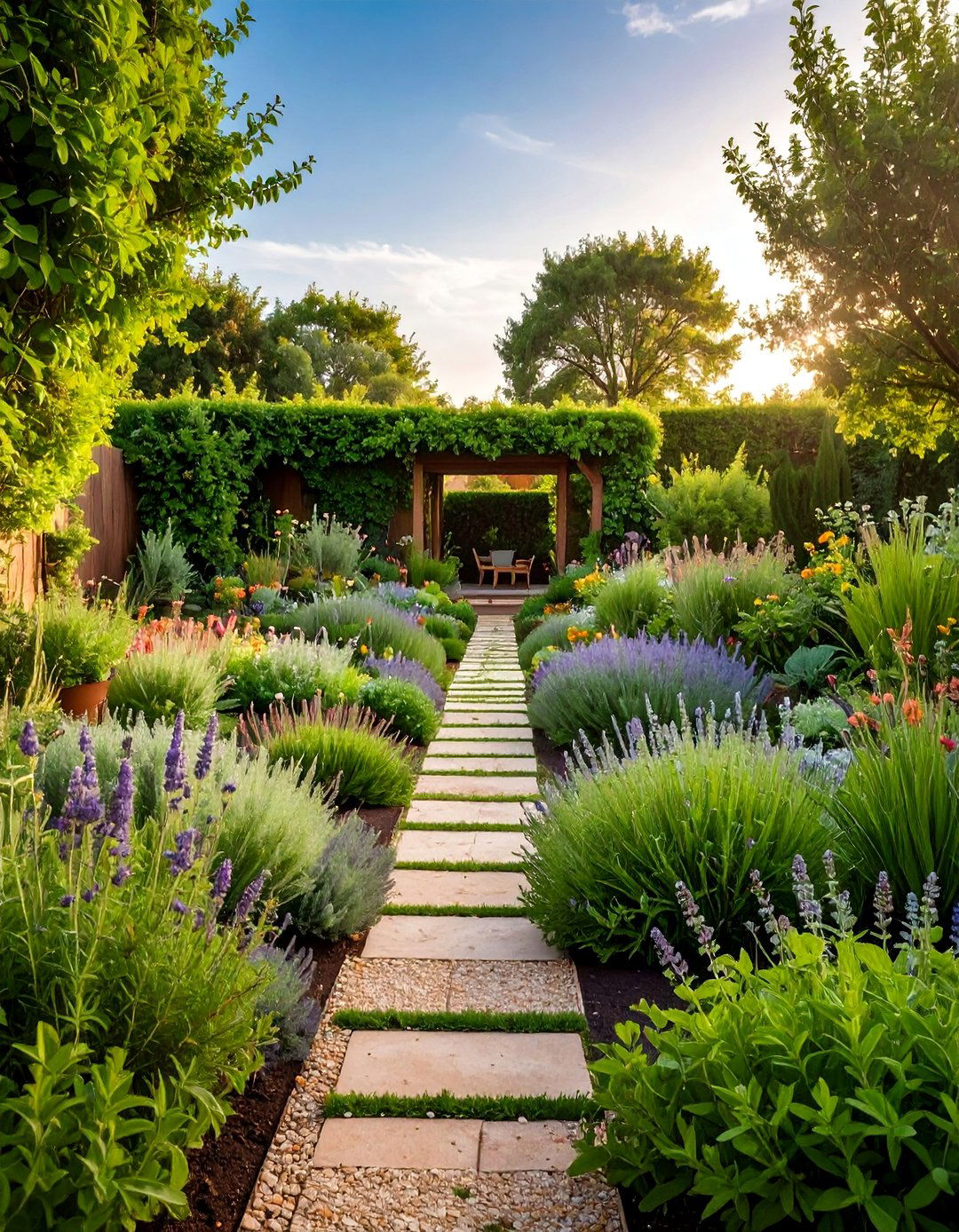
Culinary and medicinal herbs transform the traditional parterre into a functional and fragrant garden space that delights all the senses. Low-growing herbs like thyme, oregano, and sage create natural borders around compartments filled with taller herbs such as rosemary, basil, and mint varieties. This design offers practical benefits alongside visual appeal, providing fresh ingredients for cooking while maintaining formal garden structure. The varying textures, colors, and scents create a dynamic garden experience that changes throughout the growing season. Stone or brick pathways allow easy access for harvesting, while the geometric layout ensures efficient space utilization and organized growing conditions for different herb families.
4. Contemporary Parterre with Ornamental Grasses
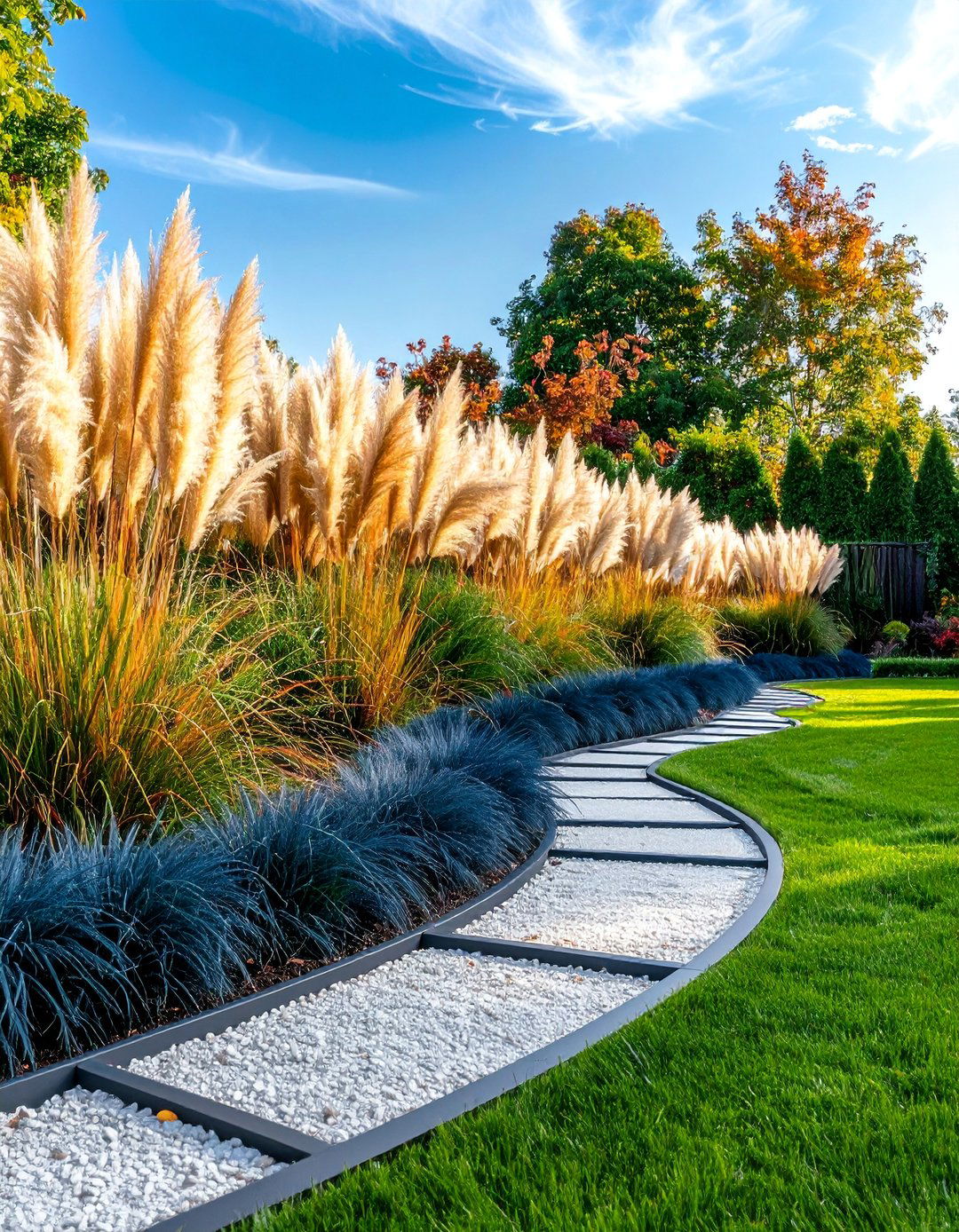
Modern landscape design embraces ornamental grasses to create contemporary parterre gardens that move gracefully with the wind while maintaining structured geometry. Dwarf fountain grass, blue fescue, and sedge varieties provide textural contrast and seasonal interest through their changing colors and seed heads. These drought-tolerant plants require minimal maintenance while offering year-round structure and movement. The informal nature of grasses softens the rigid geometry of traditional parterres, creating a relaxed yet organized garden aesthetic. Gravel pathways and steel edging complement the modern approach, while strategic placement of larger specimen grasses serves as focal points within the geometric framework.
5. Four-Square Vegetable Parterre with Brick Pathways
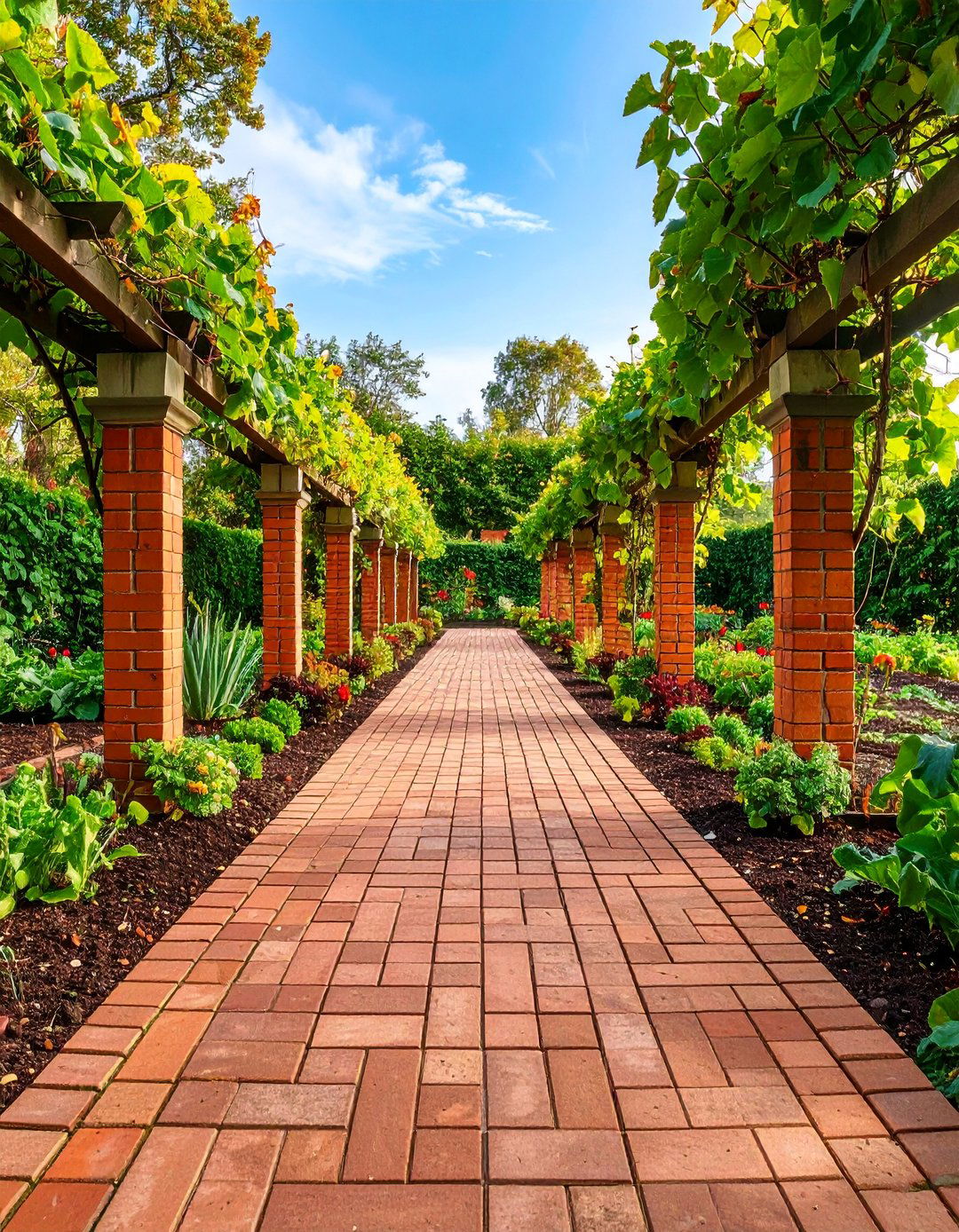
The classic four-square design adapts beautifully for vegetable gardening, combining productive growing space with formal garden aesthetics. Brick pathways create permanent structure while allowing easy access to each quadrant for planting, maintenance, and harvesting activities. This layout supports crop rotation principles, with each square dedicated to different plant families that rotate annually for soil health. Low boxwood or alternative hedge borders define the spaces while providing year-round structure when vegetables are dormant. Central focal points like sundials or decorative urns anchor the design, while espaliered fruit trees or trained berry bushes can provide vertical elements along the garden's perimeter for added productivity and visual interest.
6. Circular Parterre with Radiating Bed Design
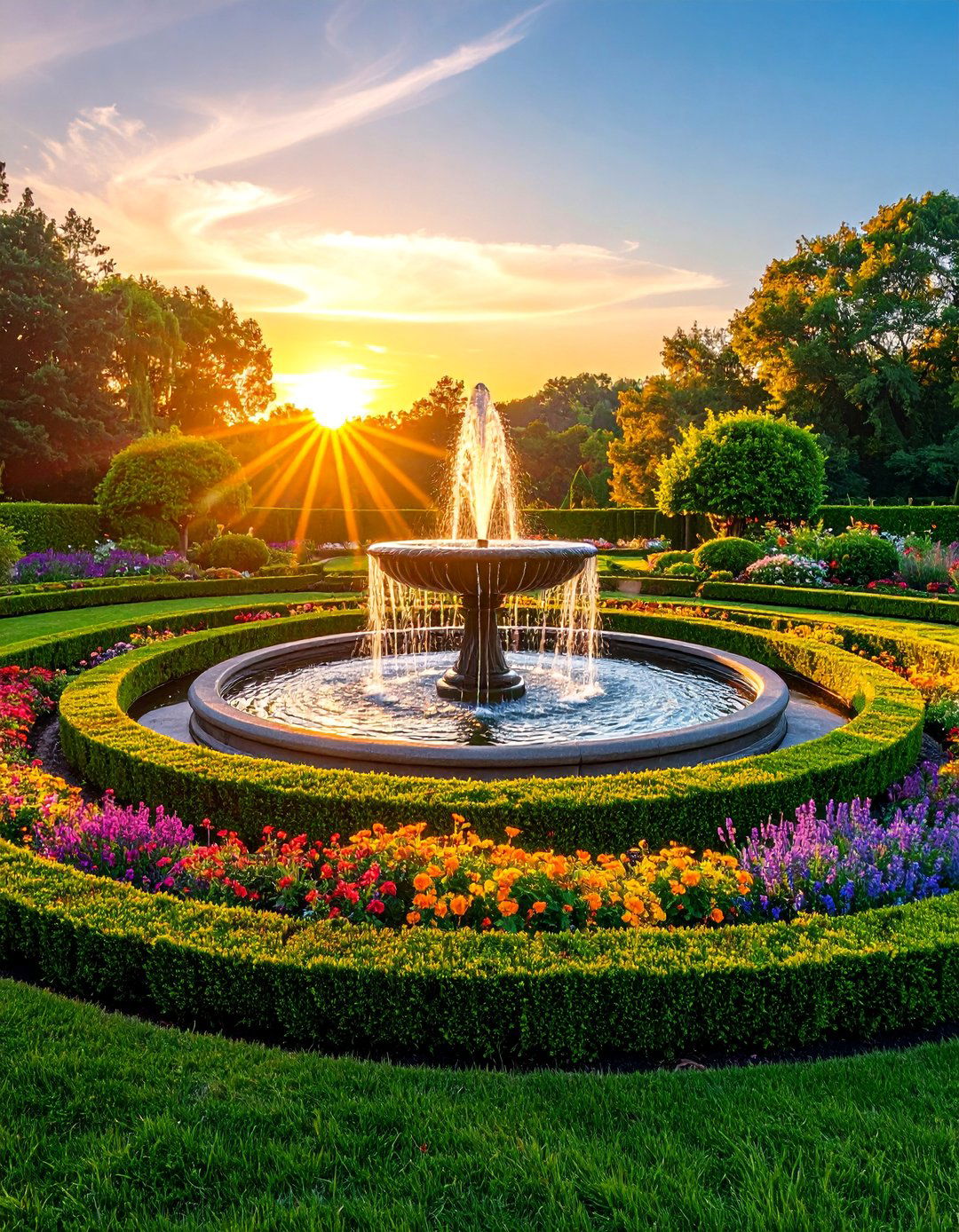
Circular parterre gardens create dramatic focal points with beds radiating outward from a central feature like a fountain, sculpture, or specimen tree. This sun-like pattern offers excellent visual impact when viewed from any angle, making it ideal for central lawn areas or prominent garden locations. Each radiating section can feature different plant themes, from single-color schemes to mixed perennial combinations that bloom in succession throughout the season. The curved borders require careful planning and skilled installation but create flowing lines that soften the garden's formal structure. Gravel or turf pathways between sections provide access while emphasizing the geometric pattern's spoke-like arrangement.
7. Raised Bed Parterre with Stone Edging
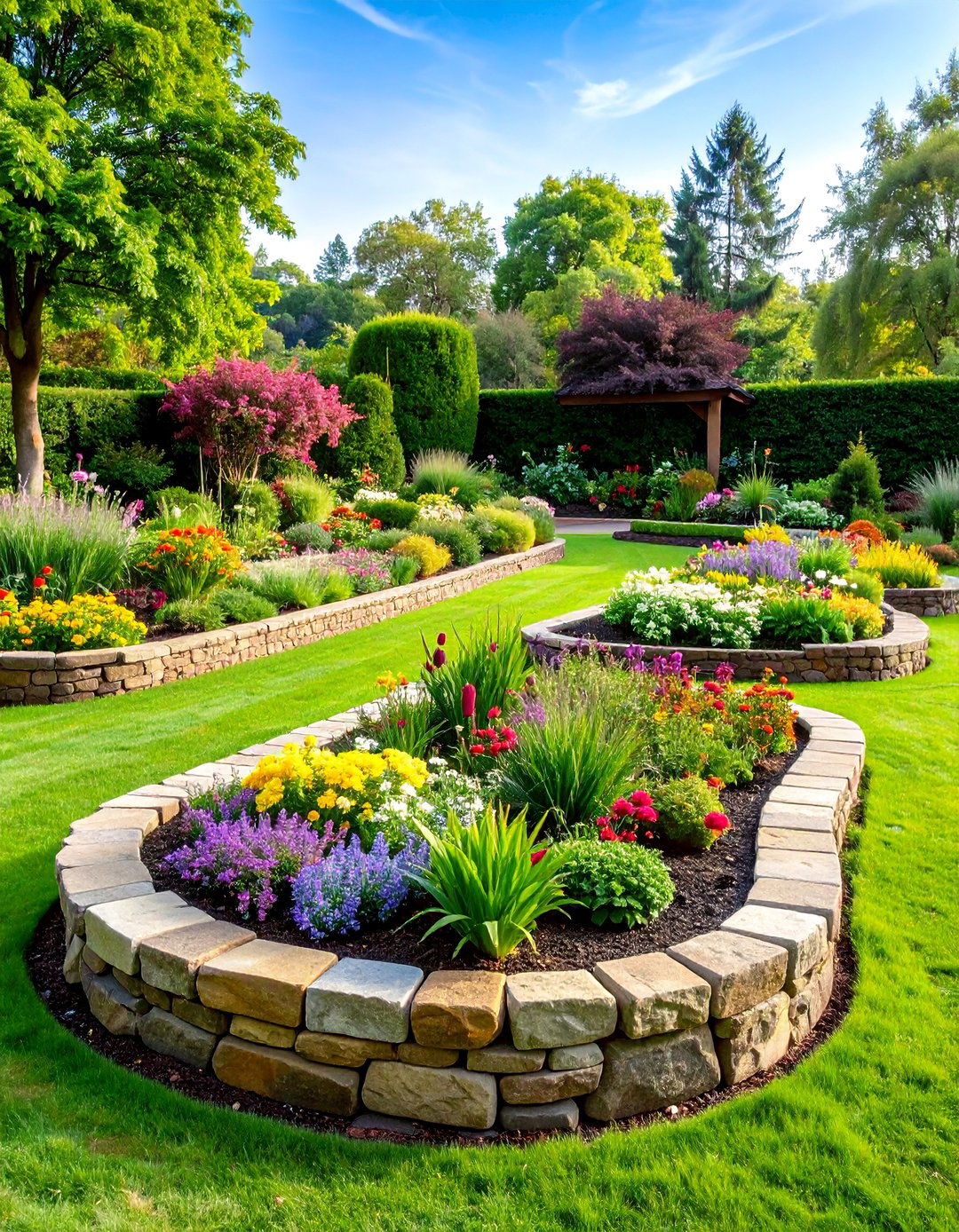
Elevated planting beds bring practical advantages to parterre design, improving drainage, soil quality, and accessibility while creating strong architectural definition. Natural stone, brick, or concrete edging materials provide permanent structure that won't deteriorate like wooden borders, ensuring long-term garden integrity. The raised format allows for better soil control, easier maintenance, and improved growing conditions for various plants. Different bed heights can create terraced effects or accommodate specific plant requirements, while the elevated design provides better views of intricate planting patterns. This approach works particularly well for areas with poor existing soil or where dramatic visual impact is desired.
8. Parterre Garden with Holly Border Alternatives
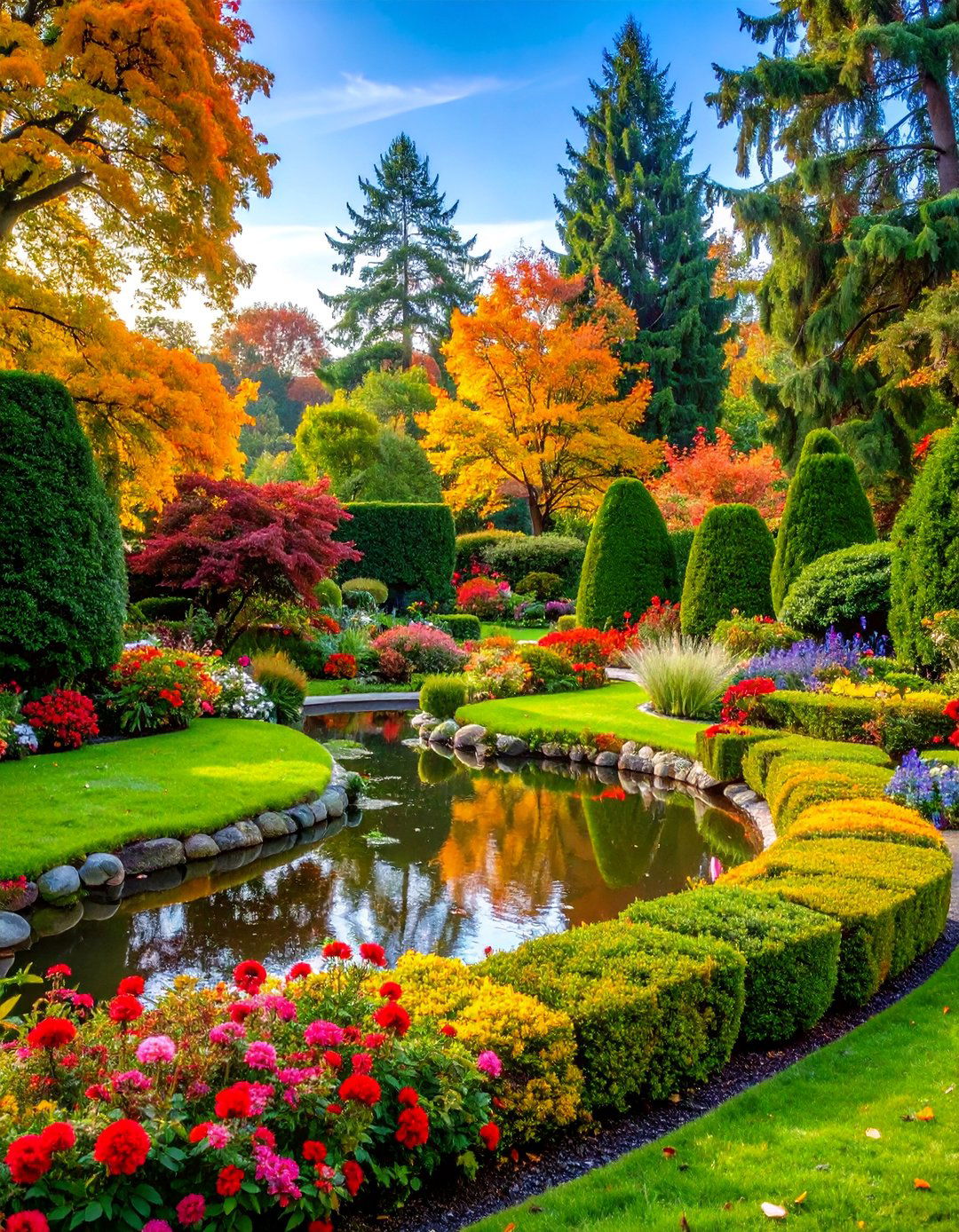
Japanese holly and inkberry holly offer excellent alternatives to traditional boxwood, providing small-leaved, dense growth that responds well to regular trimming and shaping. These holly varieties resist common boxwood diseases while offering similar aesthetic qualities for formal hedge borders. The evergreen foliage maintains garden structure year-round, while some varieties produce attractive berries that provide wildlife benefits. Holly borders frame interior plantings of colorful perennials, seasonal annuals, or decorative groundcovers that change with the seasons. The disease resistance and lower maintenance requirements make holly borders increasingly popular for modern parterre gardens seeking traditional appearance with contemporary plant choices.
9. Miniature Parterre for Small Urban Spaces
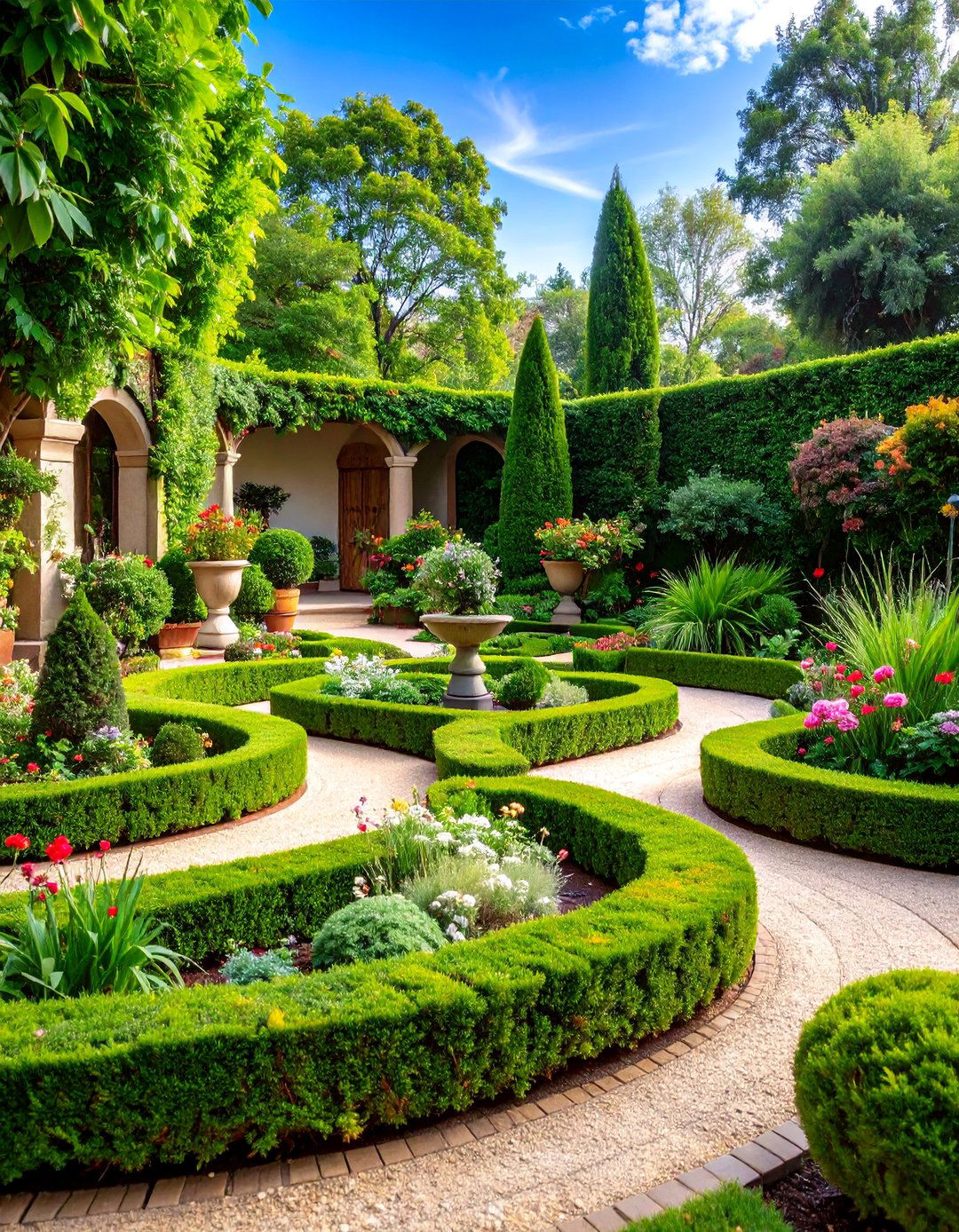
Compact parterre designs bring formal garden elegance to small courtyards, side yards, or terrace areas where space limitations require creative solutions. Dwarf varieties of traditional plants create proportional borders around intimate planting areas that can be enjoyed from close range. Container elements allow for flexibility in design and seasonal changes, while vertical elements like small topiaries or trained climbers add height without overwhelming the space. These scaled-down versions maintain the essential characteristics of larger parterres while adapting to urban constraints. Strategic use of mirrors, lighting, or water features can enhance the sense of space and create focal points appropriate to the garden's intimate scale.
10. Drought-Tolerant Parterre with Mediterranean Plants

Water-wise parterre gardens feature drought-tolerant plants that thrive in low-water conditions while maintaining formal structure and visual appeal throughout the growing season. Lavender, rosemary, and santolina create fragrant borders around beds filled with ornamental grasses, succulents, and native wildflowers adapted to dry conditions. Gravel pathways and mulched planting areas reduce water requirements while providing clean, contemporary aesthetics. This approach suits regions with water restrictions or gardeners seeking sustainable landscape solutions. The silver-gray foliage of many Mediterranean plants creates sophisticated color palettes, while their aromatic qualities add sensory appeal to the formal garden structure. Minimal irrigation requirements make this style both environmentally responsible and low-maintenance.
11. Parterre Garden with Seasonal Bulb Displays

Strategic bulb plantings create spectacular seasonal displays within parterre frameworks, providing waves of color from early spring through late autumn. Geometric patterns of tulips, daffodils, and hyacinths herald spring's arrival, followed by summer alliums and autumn crocuses for extended seasonal interest. Permanent border plants like boxwood or ornamental grasses provide structure while bulbs naturalize and multiply over time. Careful planning ensures succession blooming that maintains garden interest throughout the growing season. The formal layout allows for organized bulb management and replacement, while the predictable timing of bulb displays helps coordinate color schemes and garden maintenance schedules for optimal visual impact.
12. Edible Flower Parterre with Culinary Appeal

Combining beauty with functionality, edible flower parterres feature borders of herbs and vegetables surrounding beds filled with nasturtiums, calendulas, violas, and other edible blooms. This design appeals to gardeners who appreciate both ornamental and culinary value in their landscape choices. The formal structure ensures organized growing conditions while providing easy access for harvesting flowers for salads, garnishes, and culinary preparations. Companion planting principles guide plant selections, pairing vegetables with beneficial flowering plants that attract pollinators and deter pests naturally. Regular harvesting encourages continued blooming while providing fresh ingredients for creative cooking and entertaining throughout the growing season.
13. Topiary Parterre with Sculptural Elements
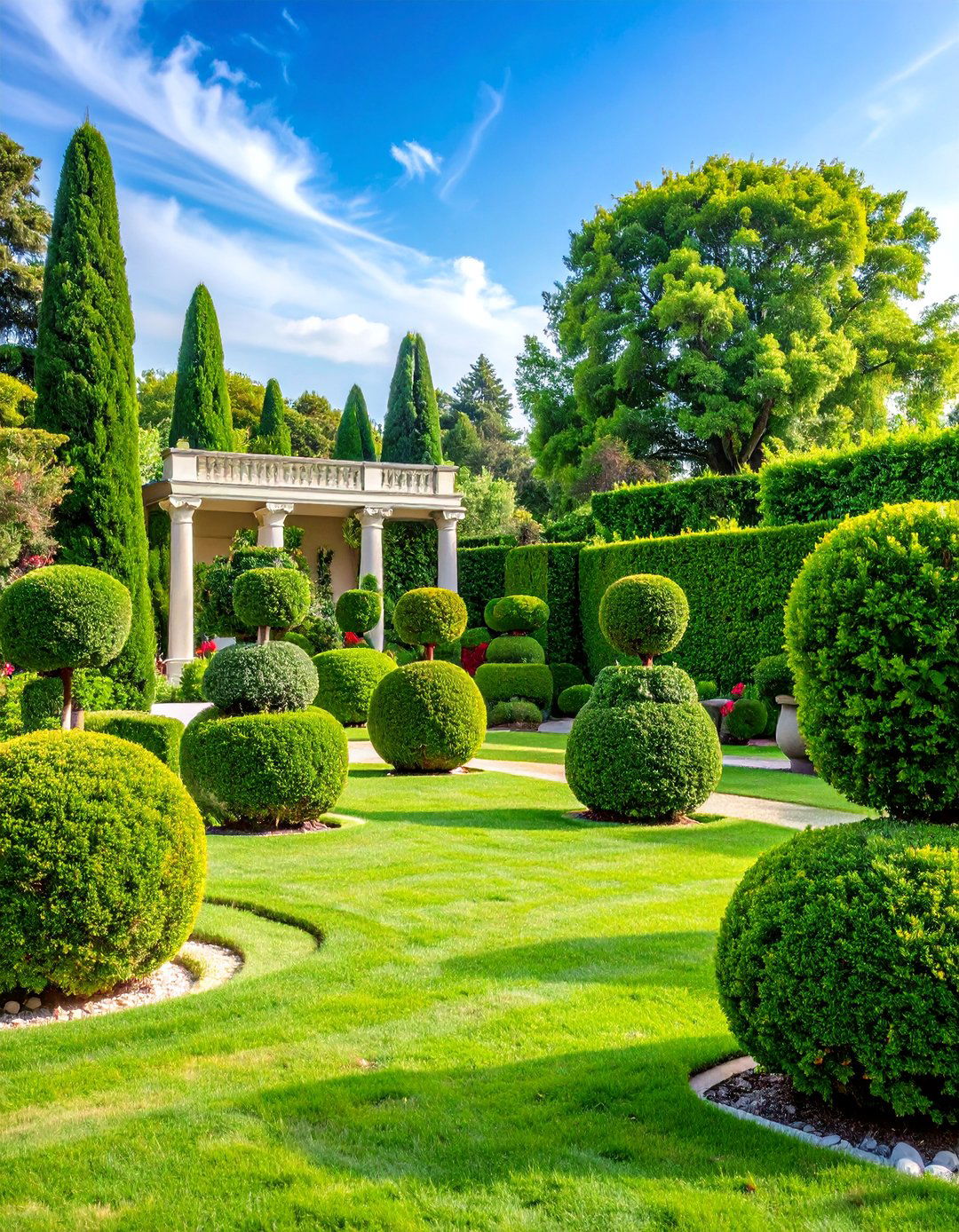
Incorporating trained topiary specimens within parterre beds creates dramatic focal points and adds vertical interest to the garden's horizontal geometry. Box balls, spirals, and geometric shapes provide architectural elements that complement the formal bed structure while showcasing horticultural artistry. The contrast between clipped topiary forms and loose plantings creates dynamic visual tension that enhances the garden's sophisticated appeal. Different topiary shapes can define specific areas or create rhythmic patterns throughout the design. Regular maintenance keeps sculptural elements crisp and well-defined, while the permanent nature of topiary provides year-round structure that anchors the garden's design even when seasonal plantings are dormant or removed.
14. Water Feature Parterre with Central Fountain
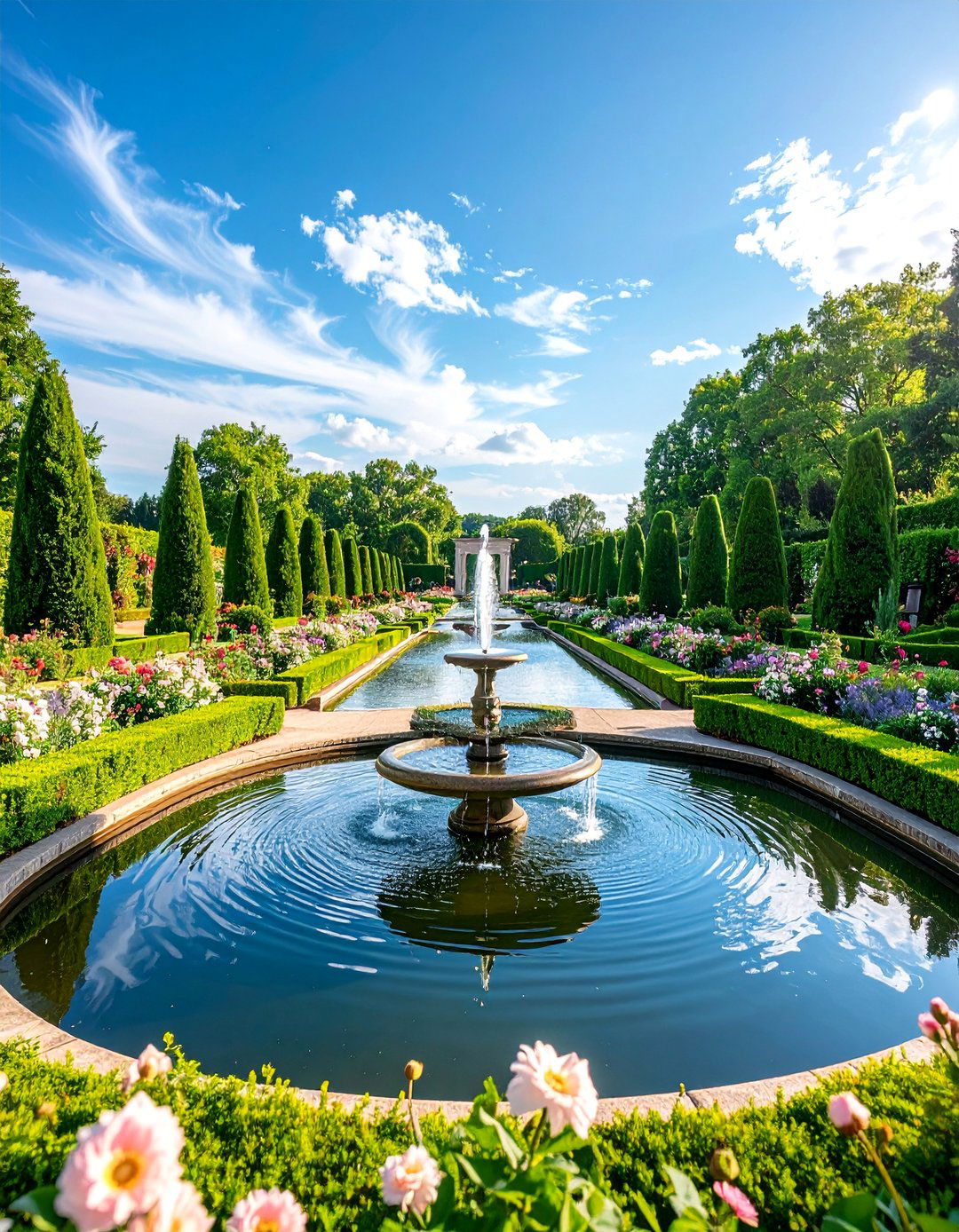
Central water features transform parterre gardens into tranquil retreats that combine formal structure with soothing water sounds and reflective surfaces. Fountains, reflecting pools, or simple water basins serve as focal points around which geometric beds radiate in balanced arrangements. The water element attracts birds and beneficial insects while creating microclimates that support diverse plant communities. Aquatic plants in formal containers or built-in water features add another layer of horticultural interest. The combination of structured plantings and flowing water creates sensory appeal that enhances the garden's peaceful atmosphere. Proper drainage and circulation systems ensure water features remain clean and functional throughout the seasons.
15. Cottage-Style Parterre with Informal Plantings
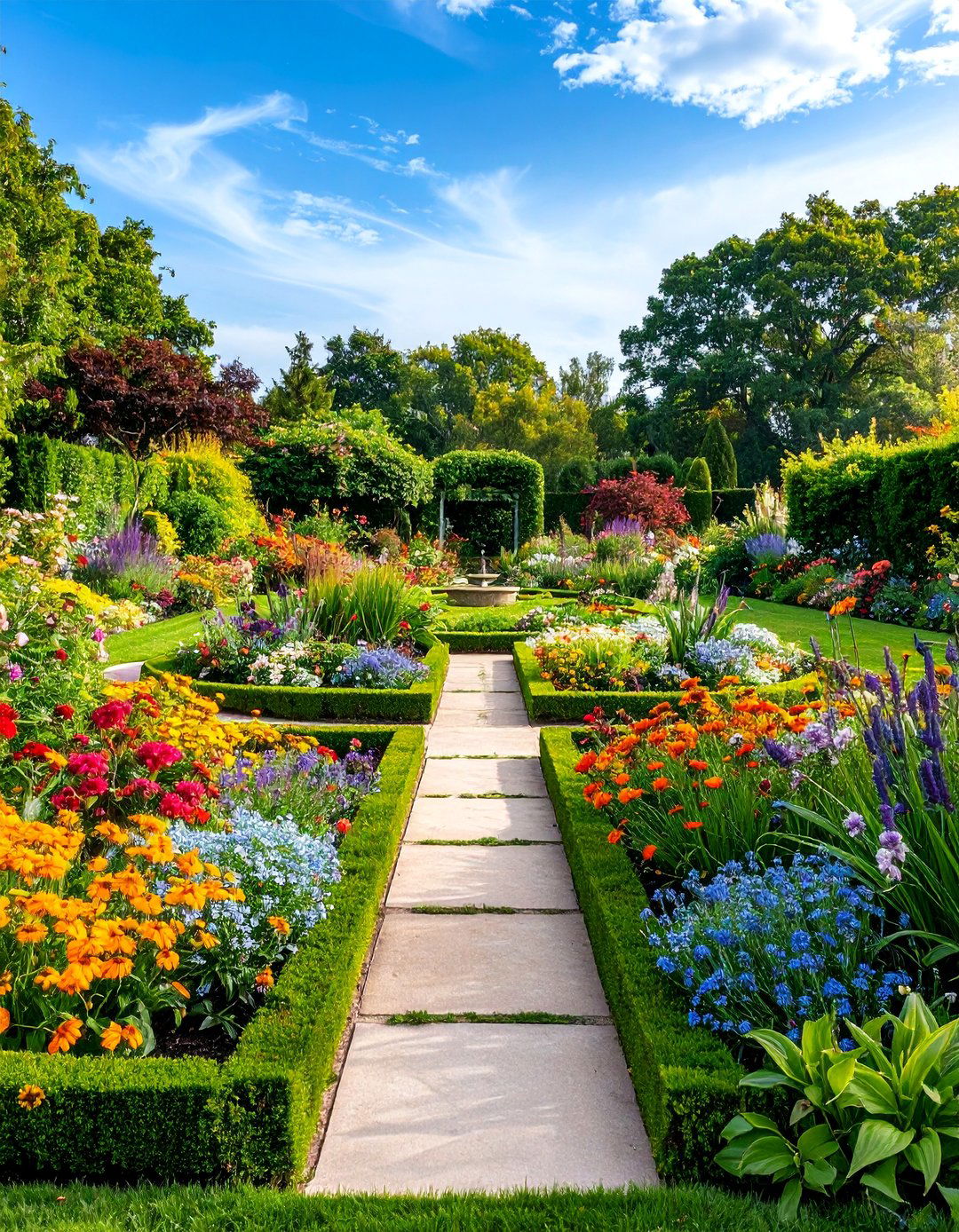
Relaxed interpretations of parterre design embrace cottage garden aesthetics while maintaining underlying geometric structure for organized growing and maintenance. Mixed perennials, self-seeding annuals, and climbing roses create abundant, informal displays within formal bed boundaries. This approach combines the best of structured and naturalistic garden styles, providing organization without rigidity. The geometric framework supports diverse plant communities while allowing for spontaneous combinations and seasonal changes. Pathways ensure access through dense plantings, while the formal structure prevents the exuberant cottage garden style from becoming chaotic. This design appeals to gardeners who appreciate both order and abundance in their landscape compositions.
16. Parterre Garden with Espaliered Fruit Trees

Trained fruit trees along parterre borders combine productive and ornamental elements while adding vertical structure to horizontal garden designs. Apples, pears, and citrus trees can be trained along fences or freestanding supports, providing screening, seasonal flowers, and edible harvests. The formal training techniques complement parterre aesthetics while maximizing growing space in limited areas. Underplantings of herbs, vegetables, or flowers create layered compositions that change seasonally while maintaining year-round structure through the trained tree framework. This approach appeals to gardeners seeking maximum productivity from formal garden spaces while creating sophisticated landscape features that serve multiple functions throughout the growing season.
17. Gravel Garden Parterre with Architectural Plants
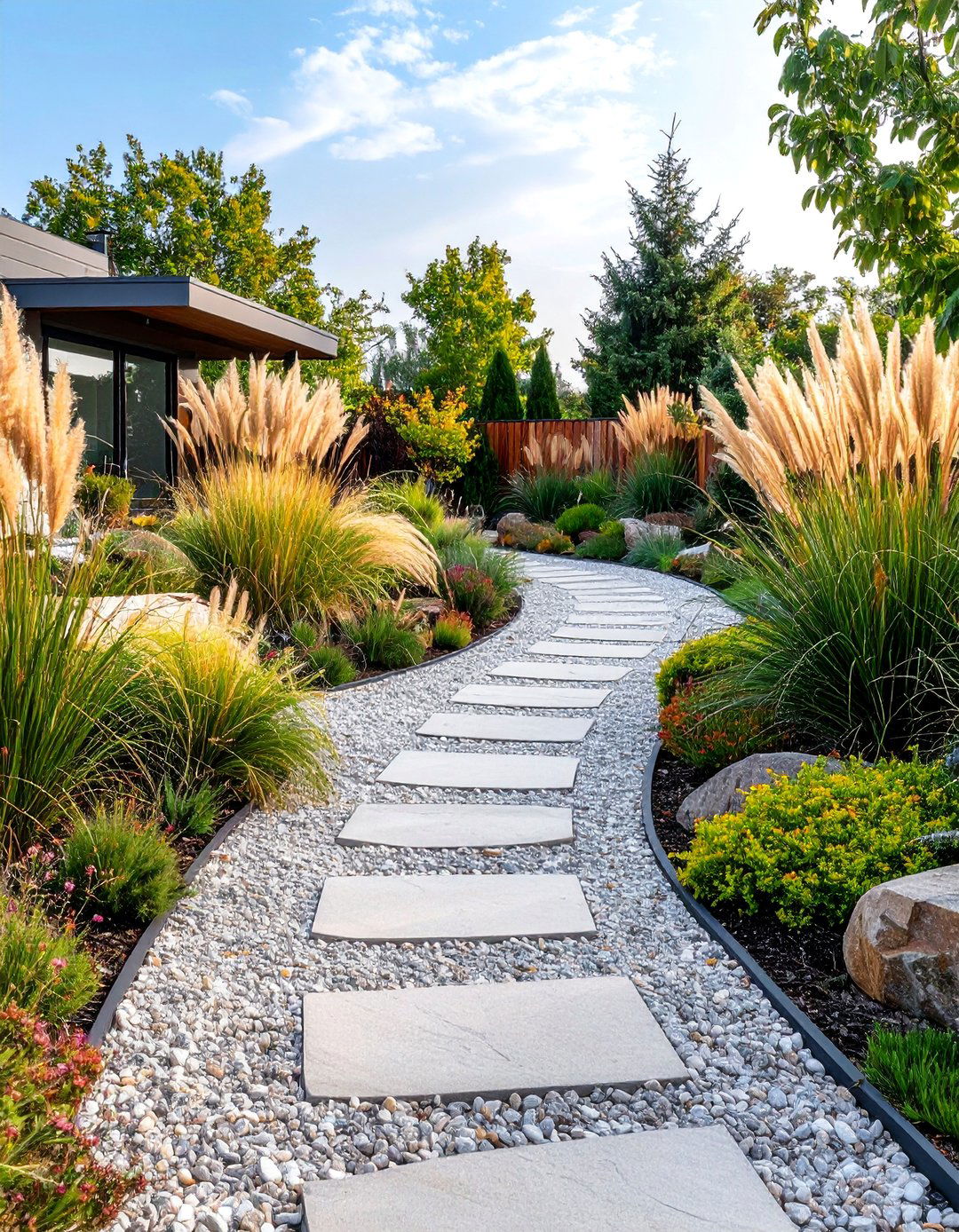
Drought-tolerant gravel gardens adapt parterre principles for low-maintenance landscapes featuring architectural plants with strong structural qualities. Ornamental grasses, yuccas, and drought-adapted perennials create textural displays within geometric gravel beds bordered by stone or metal edging. The mineral mulch suppresses weeds while providing excellent drainage for plants adapted to dry conditions. This contemporary approach reduces irrigation requirements while maintaining formal structure through careful plant placement and geometric organization. The neutral background of gravel allows plant forms and textures to dominate the design, creating sophisticated compositions that change subtly with seasons while requiring minimal maintenance intervention.
18. Parterre Garden with Color-Themed Planting Schemes
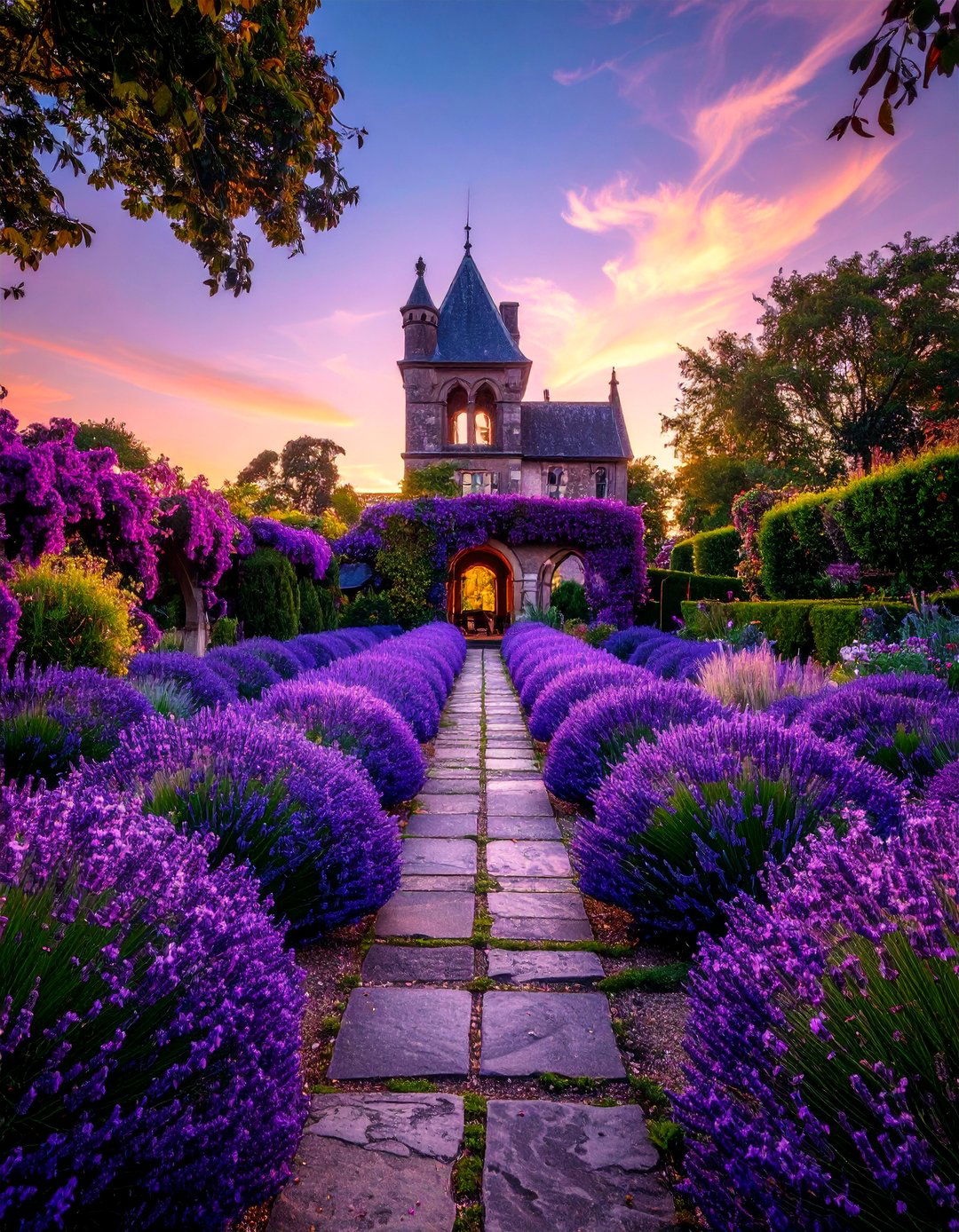
Monochromatic or limited color palettes create sophisticated parterre displays that emphasize form and texture while providing unified visual impact throughout the growing season. White gardens, purple schemes, or warm-colored combinations create cohesive designs that appear intentional and refined. The formal structure supports disciplined plant selections while the geometric organization prevents color-themed gardens from appearing monotonous. Seasonal variations within chosen color ranges provide subtle changes while maintaining overall design integrity. This approach appeals to gardeners who appreciate restrained elegance and sophisticated color relationships in formal landscape settings while allowing for creative expression within established parameters.
19. Kitchen Garden Parterre with Convenient Access
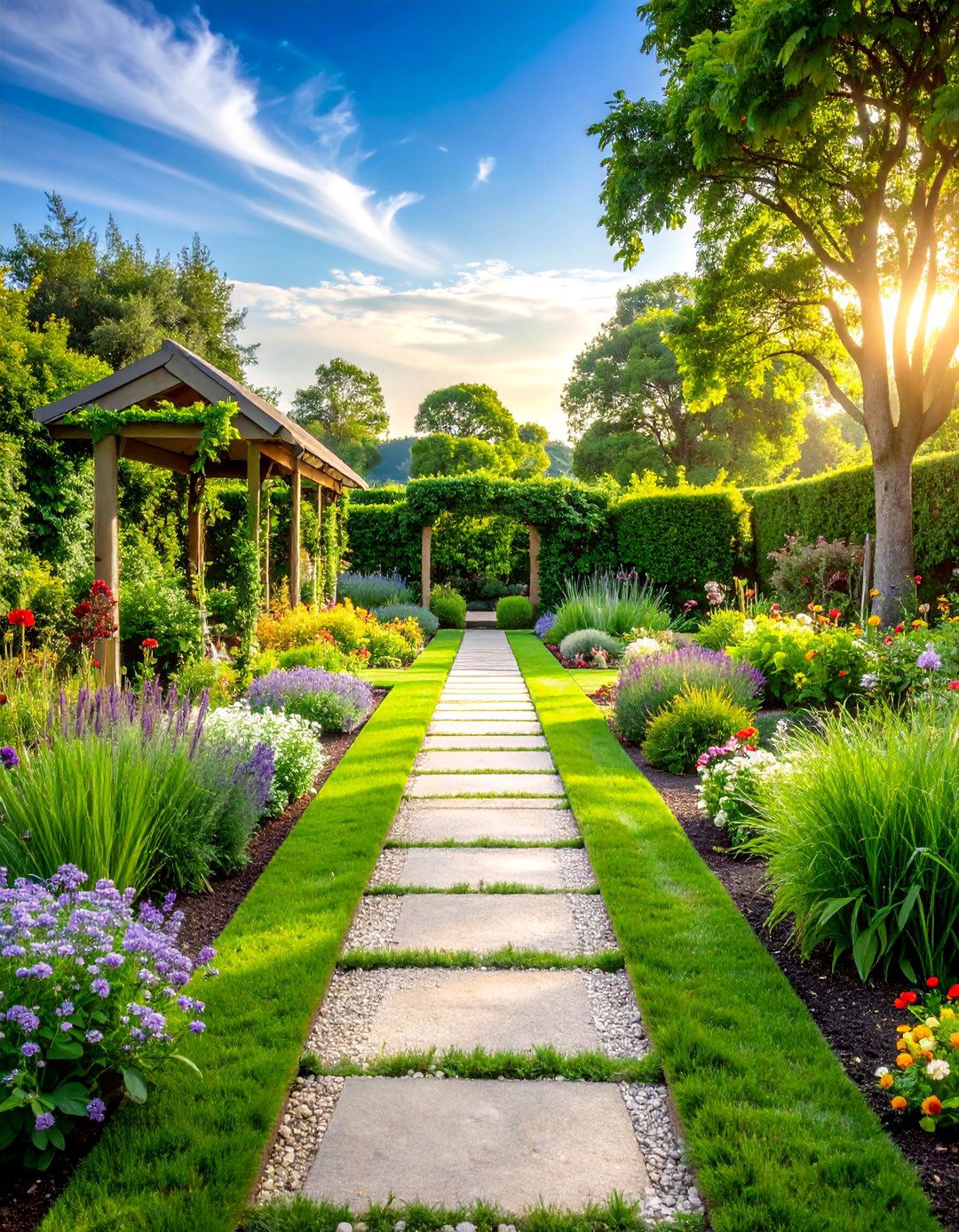
Functional kitchen gardens benefit from parterre organization that provides easy access to frequently harvested herbs, vegetables, and cutting flowers. Wide pathways accommodate wheelbarrows and garden tools while geometric organization ensures efficient space utilization for intensive growing methods. Different bed sections can be dedicated to specific crop families or harvest seasons, supporting rotation principles and organized garden management. The formal structure elevates utilitarian gardens into attractive landscape features that complement architectural settings. Strategic placement near kitchen entries provides convenient access for daily harvesting while maintaining sophisticated garden aesthetics that enhance property value and gardening enjoyment throughout the growing season.
20. Shaded Parterre with Woodland Plant Selections

Partially shaded locations can support beautiful parterre gardens featuring plants adapted to lower light conditions while maintaining formal structure and seasonal interest. Hostas, ferns, and shade-tolerant perennials create textural displays within borders of yew, holly, or other shade-tolerant evergreens. The cooler conditions often found in shaded areas support different plant communities while requiring adjusted maintenance schedules and plant selections. Woodland wildflowers, astilbe, and hellebores provide seasonal color while tolerating reduced sunlight conditions. This approach expands parterre possibilities to areas often considered challenging for formal garden development while creating sophisticated landscapes in previously underutilized garden spaces.
21. Parterre Garden with Native Plant Communities
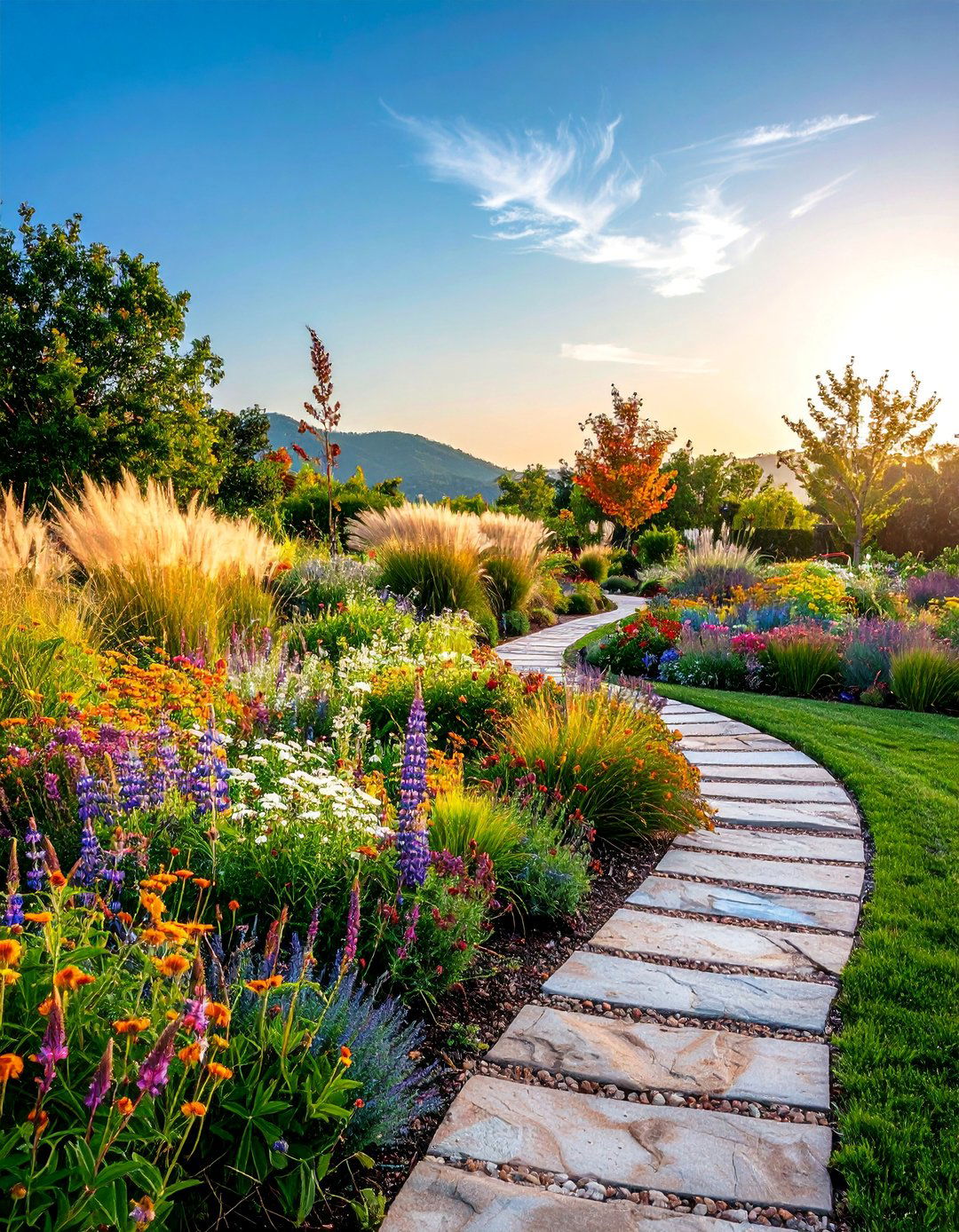
Incorporating native plants into parterre designs creates environmentally sustainable gardens that support local wildlife while maintaining formal structure and visual appeal. Regional wildflowers, native grasses, and indigenous shrubs provide authentic plant communities within geometric frameworks that organize growing space efficiently. This approach reduces maintenance requirements while supporting pollinators, birds, and beneficial insects that contribute to garden health. The formal structure prevents native gardens from appearing wild or unkempt while celebrating regional plant heritage. Educational value increases as visitors learn about local ecosystems while appreciating sophisticated garden design that demonstrates environmental stewardship through thoughtful plant selection and landscape planning.
22. Contemporary Steel-Edged Parterre with Modern Materials
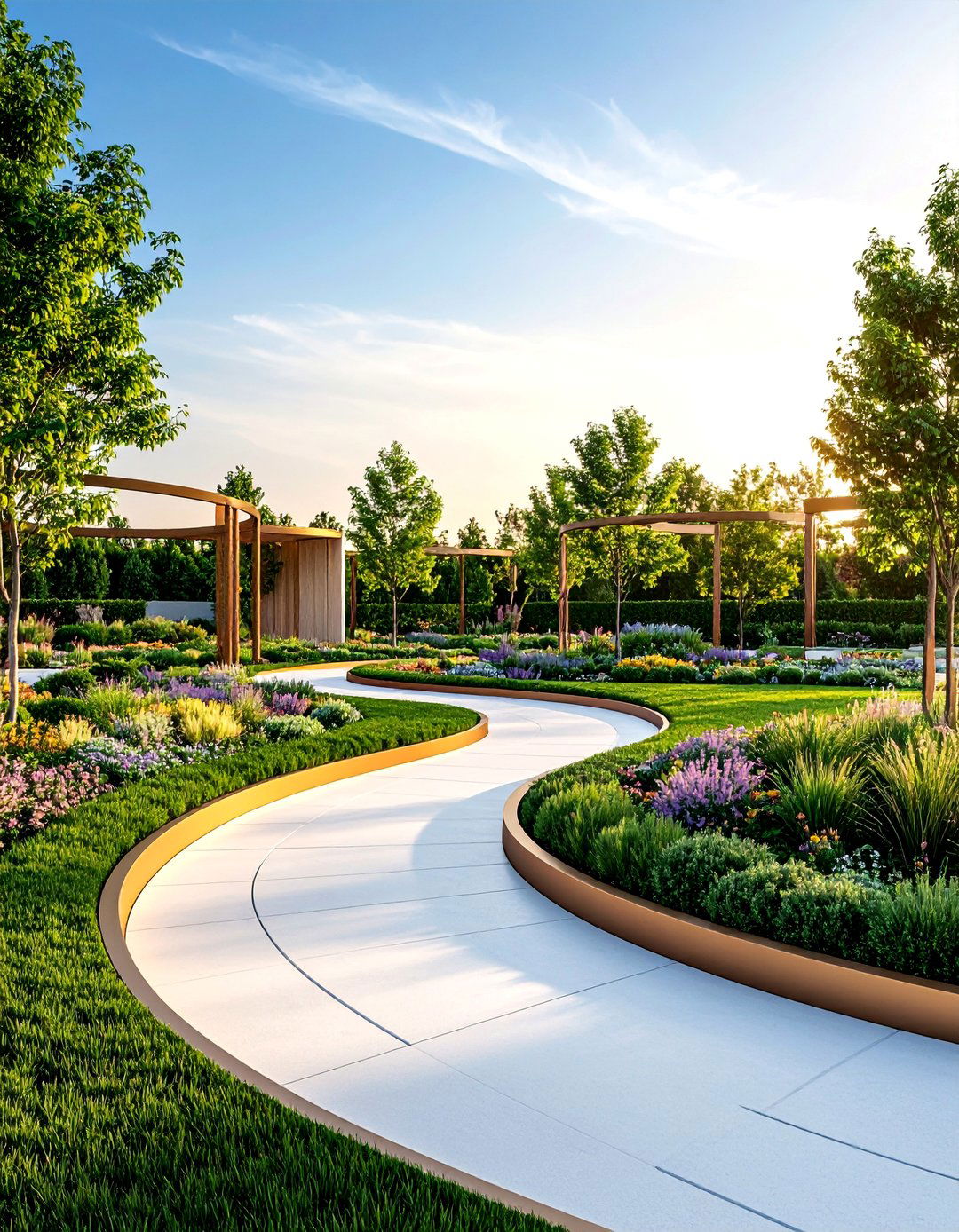
Modern materials like cor-ten steel, concrete, or aluminum create crisp, contemporary parterre borders that complement architectural landscapes and modern home designs. These durable materials provide precise edges while aging gracefully to develop attractive patinas that enhance garden aesthetics over time. The clean lines of modern edging materials support minimalist planting schemes featuring architectural plants, ornamental grasses, or single-species displays. This approach appeals to gardeners seeking contemporary expressions of traditional formal garden principles while utilizing materials that provide long-term structural integrity. The contrast between modern materials and traditional geometric organization creates dynamic design tension that enhances both elements.
23. Parterre Garden with Vertical Growing Elements

Vertical gardening techniques expand parterre possibilities by incorporating trellises, arbors, or living walls that add height while maintaining geometric organization. Climbing vegetables, flowering vines, or trained fruit trees provide vertical elements that complement horizontal bed arrangements. This approach maximizes growing space while creating garden rooms and screening effects that enhance privacy and visual interest. The formal structure supports organized vertical elements while preventing them from overwhelming the horizontal design components. Strategic placement of vertical features can frame views, create focal points, or provide seasonal screening while maintaining the essential characteristics of traditional parterre design principles.
24. Winter Interest Parterre with Evergreen Structure

Designing for winter interest ensures parterre gardens remain attractive year-round through careful selection of evergreen plants, interesting bark textures, and structural elements that provide beauty during dormant seasons. Conifers, broadleaf evergreens, and plants with attractive winter stems create compositions that celebrate seasonal changes while maintaining garden structure. The formal organization showcases winter plant characteristics that might be overlooked in less structured garden settings. Strategic placement of winter-flowering plants, decorative containers, or seasonal decorations can enhance cold-season appeal while the underlying evergreen structure provides continuity between growing seasons and ensures the garden remains an attractive landscape feature throughout the year.
25. Fragrance-Focused Parterre with Aromatic Plants
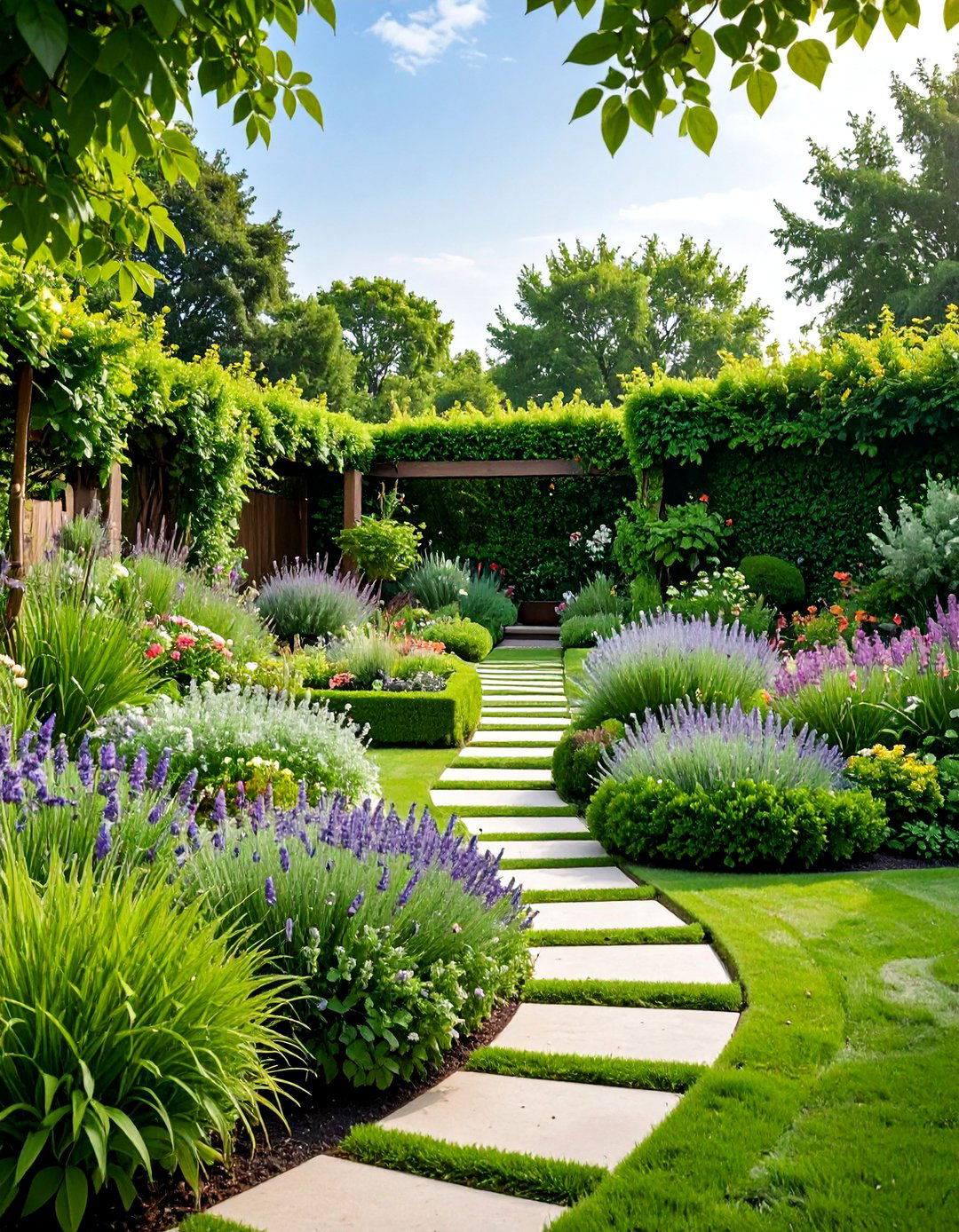
Scented gardens organized in parterre format create multisensory experiences that combine formal visual appeal with aromatic delights throughout the growing season. Fragrant herbs, scented geraniums, and aromatic perennials provide diverse fragrances while geometric organization ensures visitors encounter different scents as they move through garden pathways. The formal structure supports intensive planting of aromatic species while providing organization that prevents overwhelming scent combinations. Evening-scented plants like night-blooming jasmine or four o'clocks can extend garden enjoyment into twilight hours. Strategic placement considers prevailing breezes and seating areas to maximize fragrance distribution while maintaining sophisticated garden aesthetics that appeal to multiple senses simultaneously.
Conclusion:
Parterre gardens offer endless possibilities for creating sophisticated, organized landscapes that combine formal structure with creative plant selections. These 25 ideas demonstrate how traditional French garden principles can be adapted for modern needs, from small urban spaces to expansive country estates. Whether featuring drought-tolerant plants, edible gardens, or contemporary materials, parterre designs provide frameworks for organized, beautiful gardens that serve both practical and aesthetic purposes while enhancing property value and gardening enjoyment.


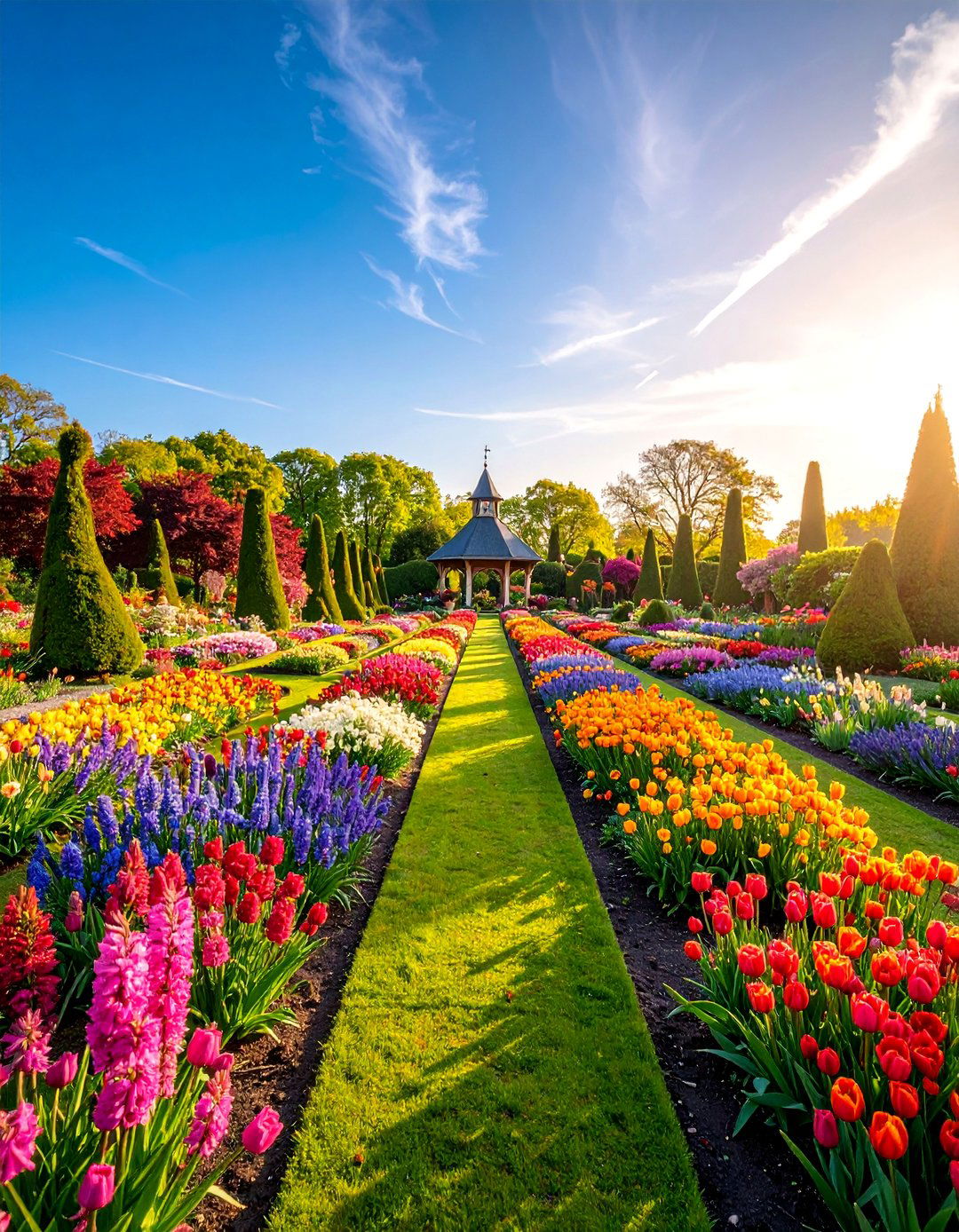


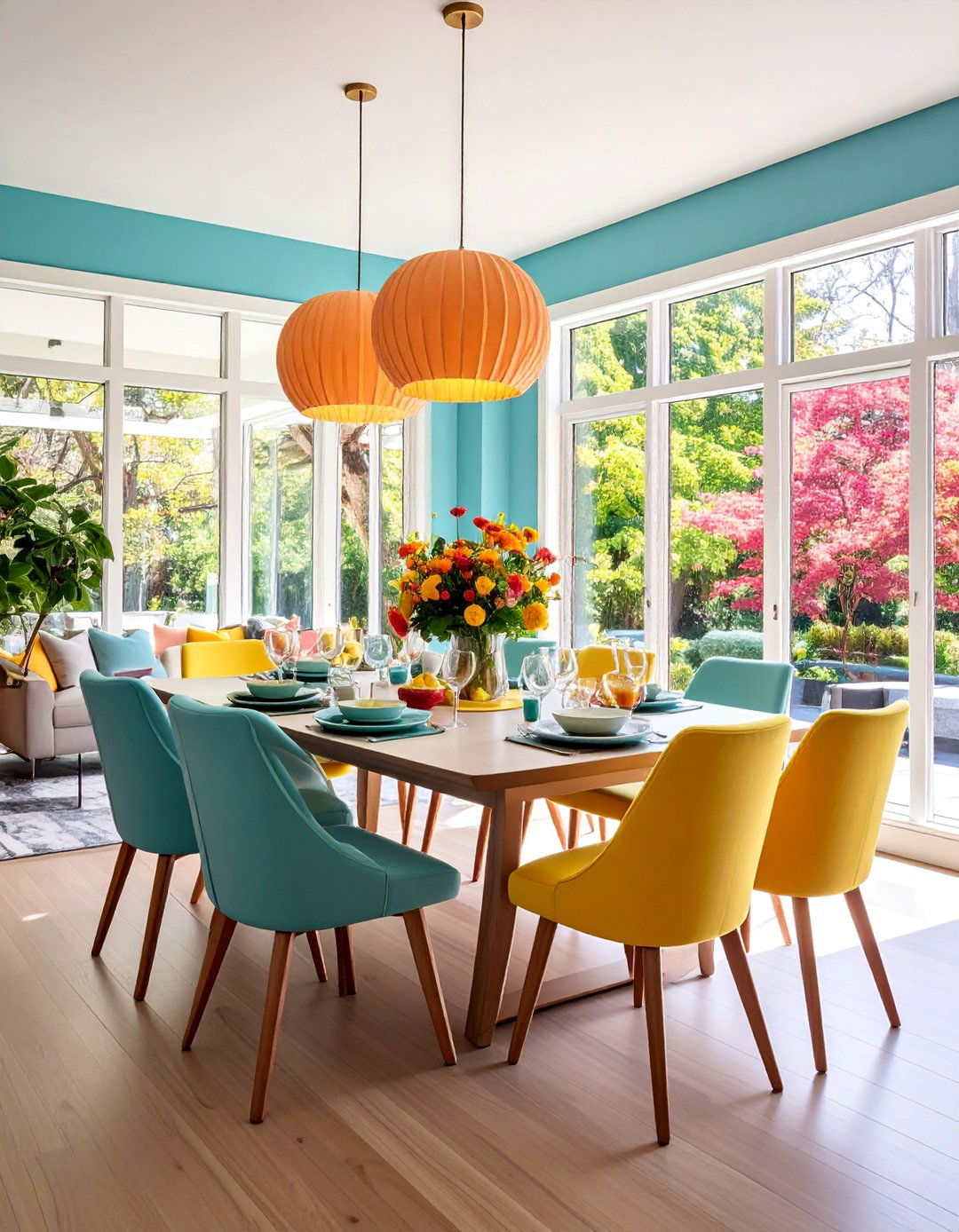
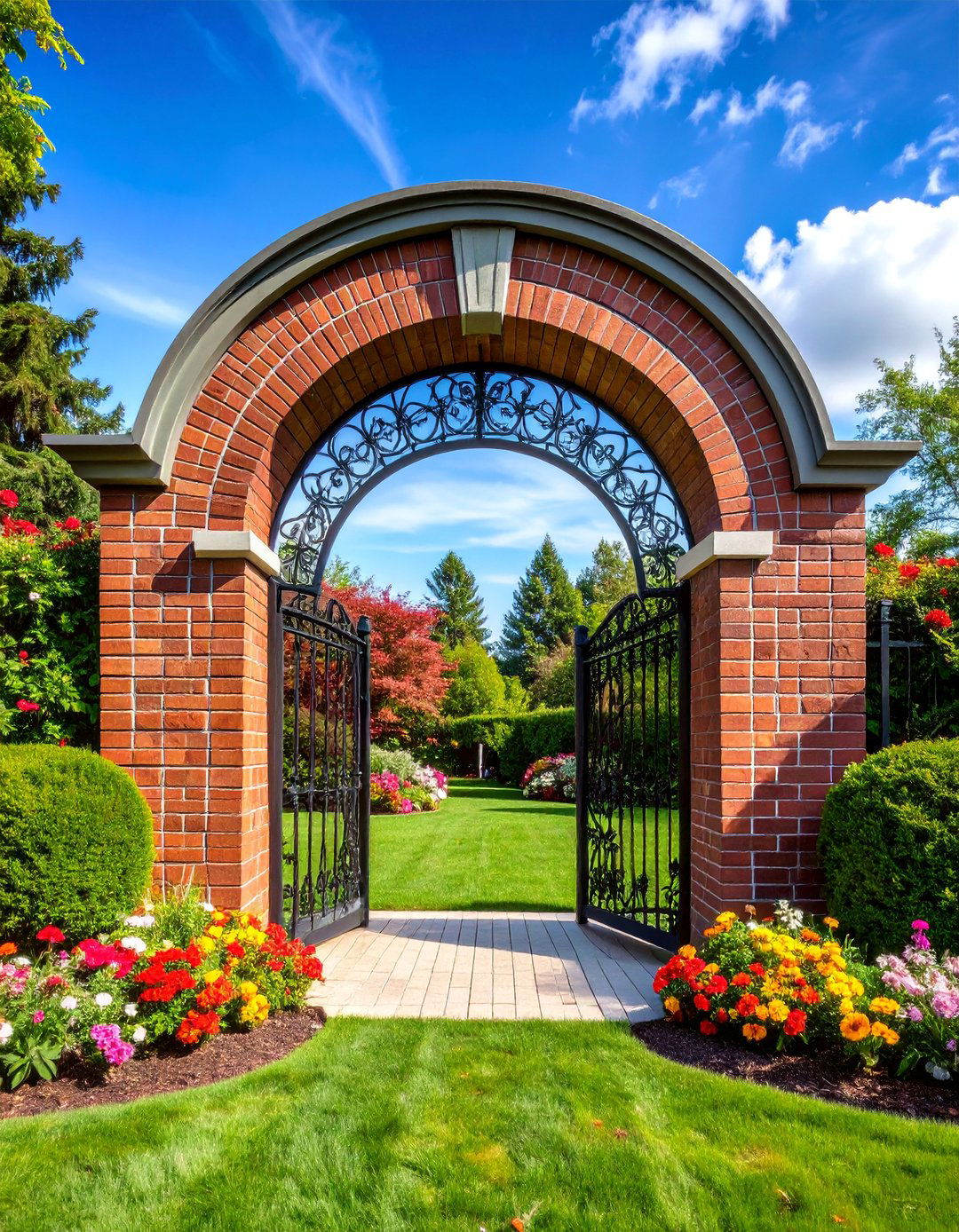
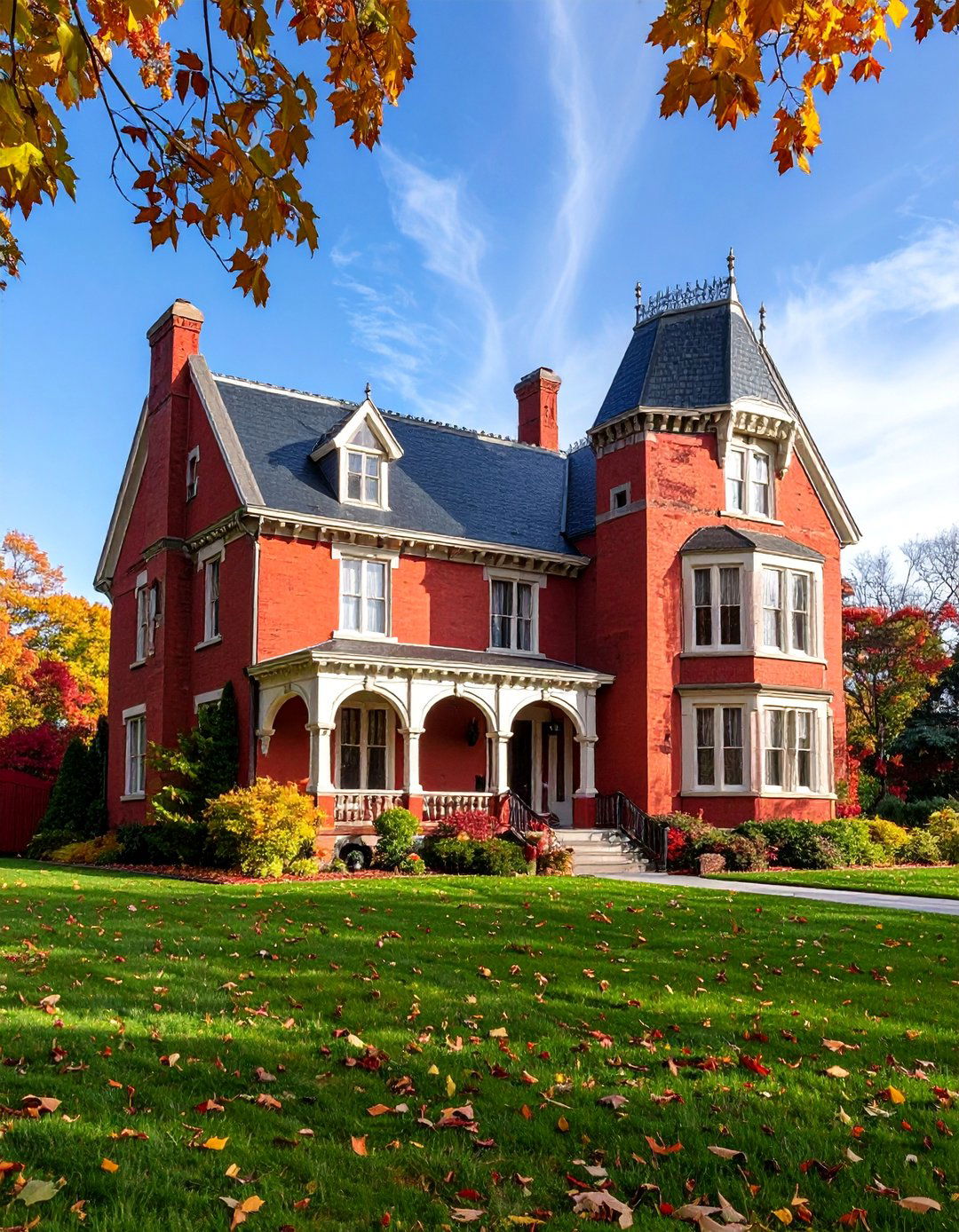
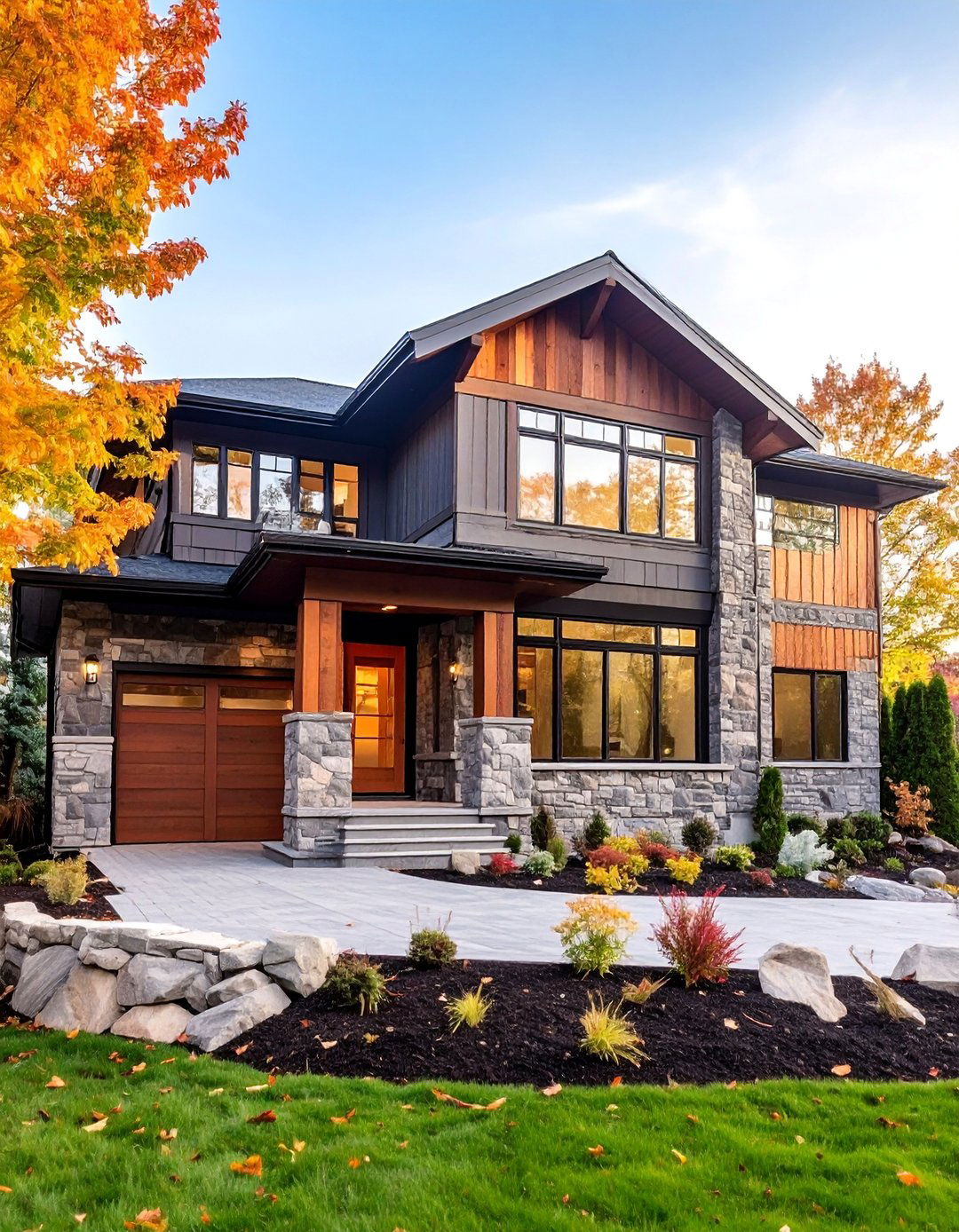
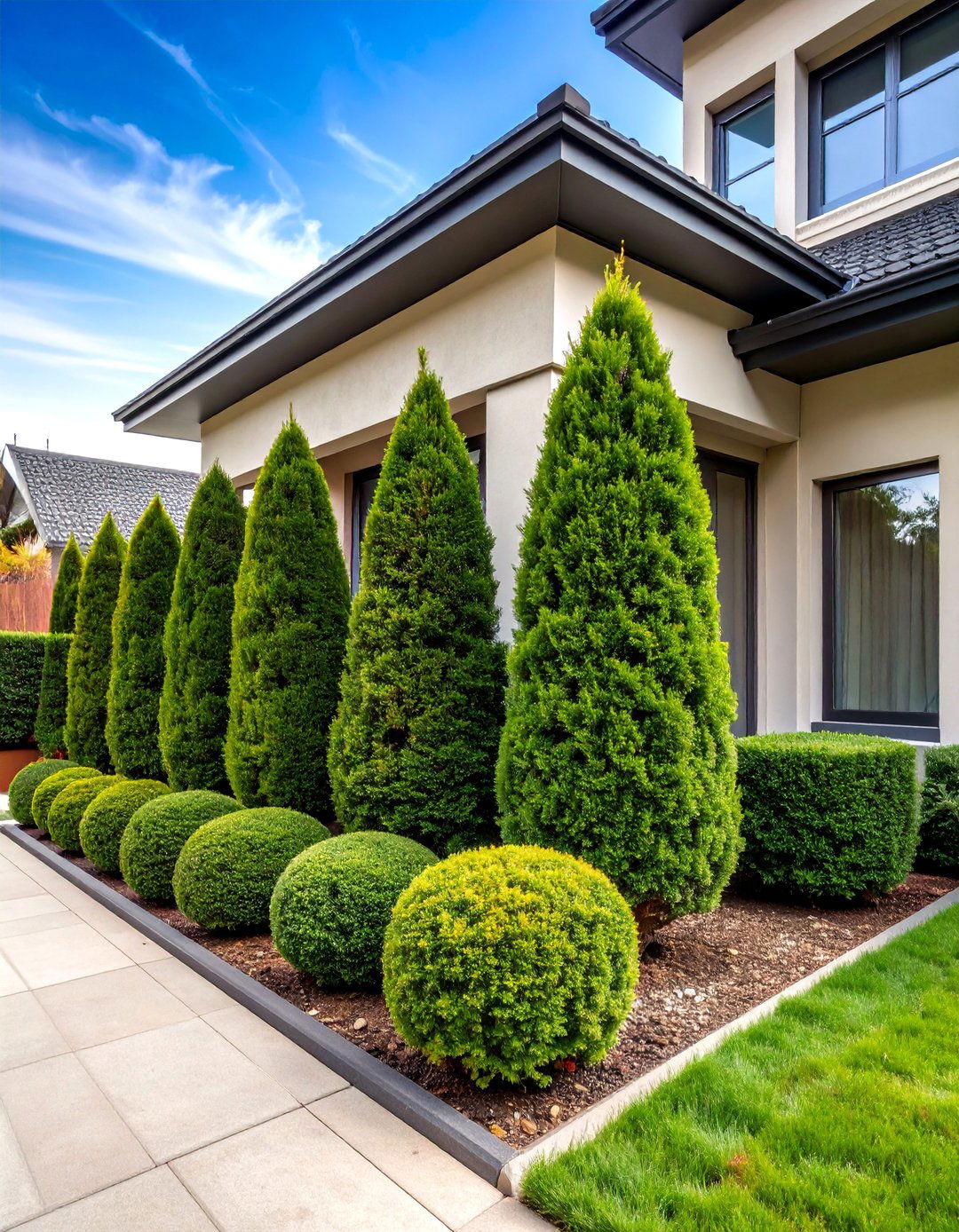
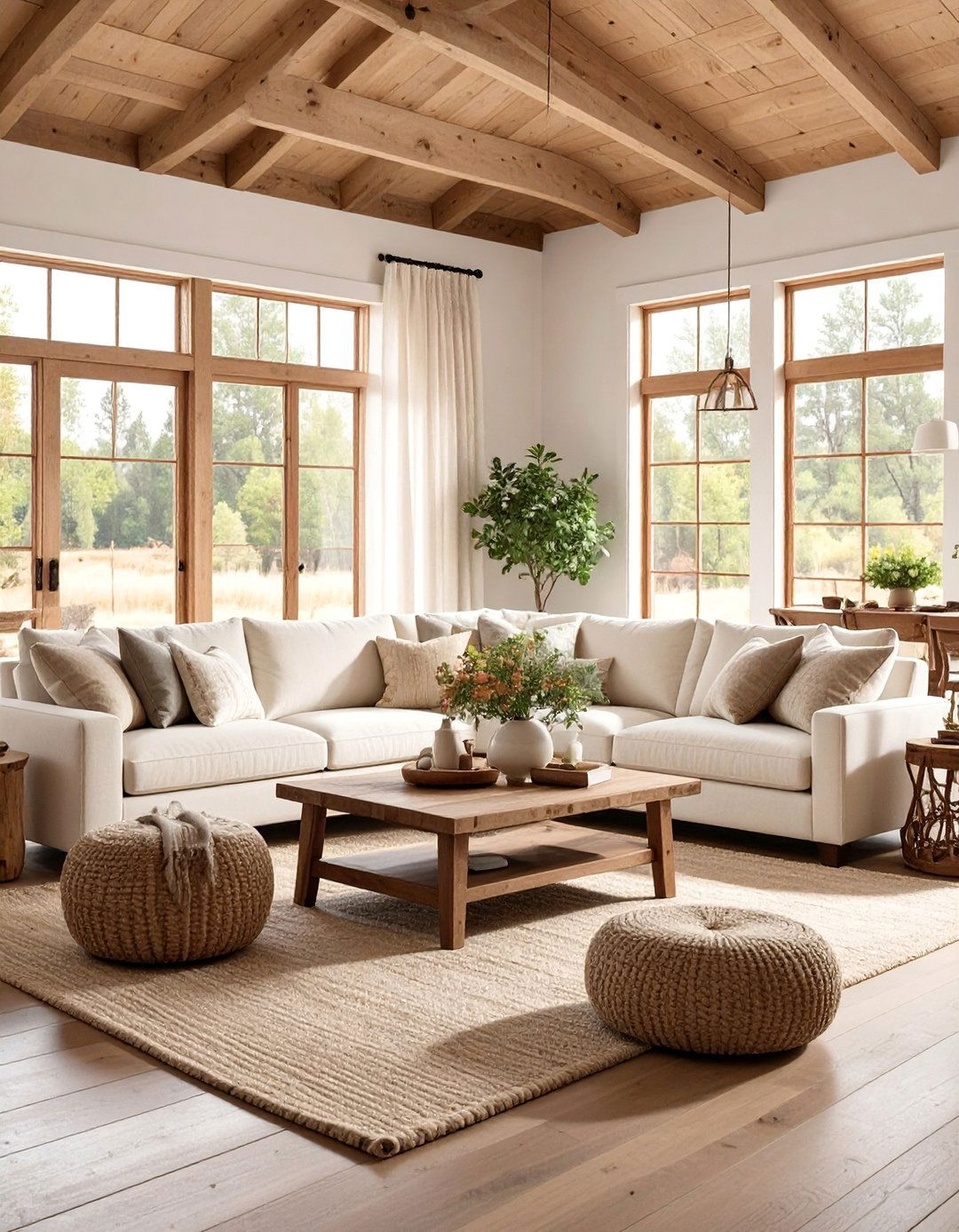
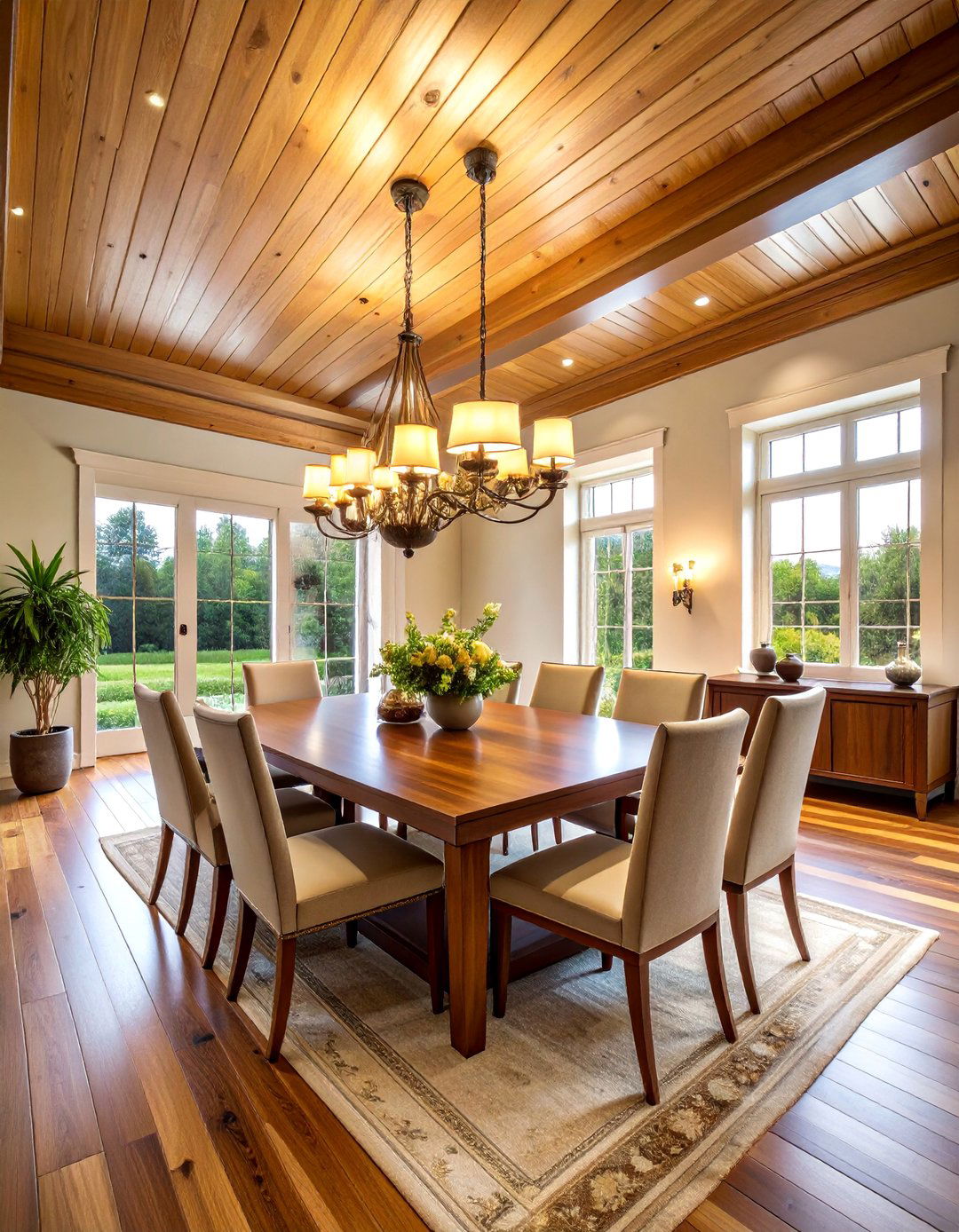
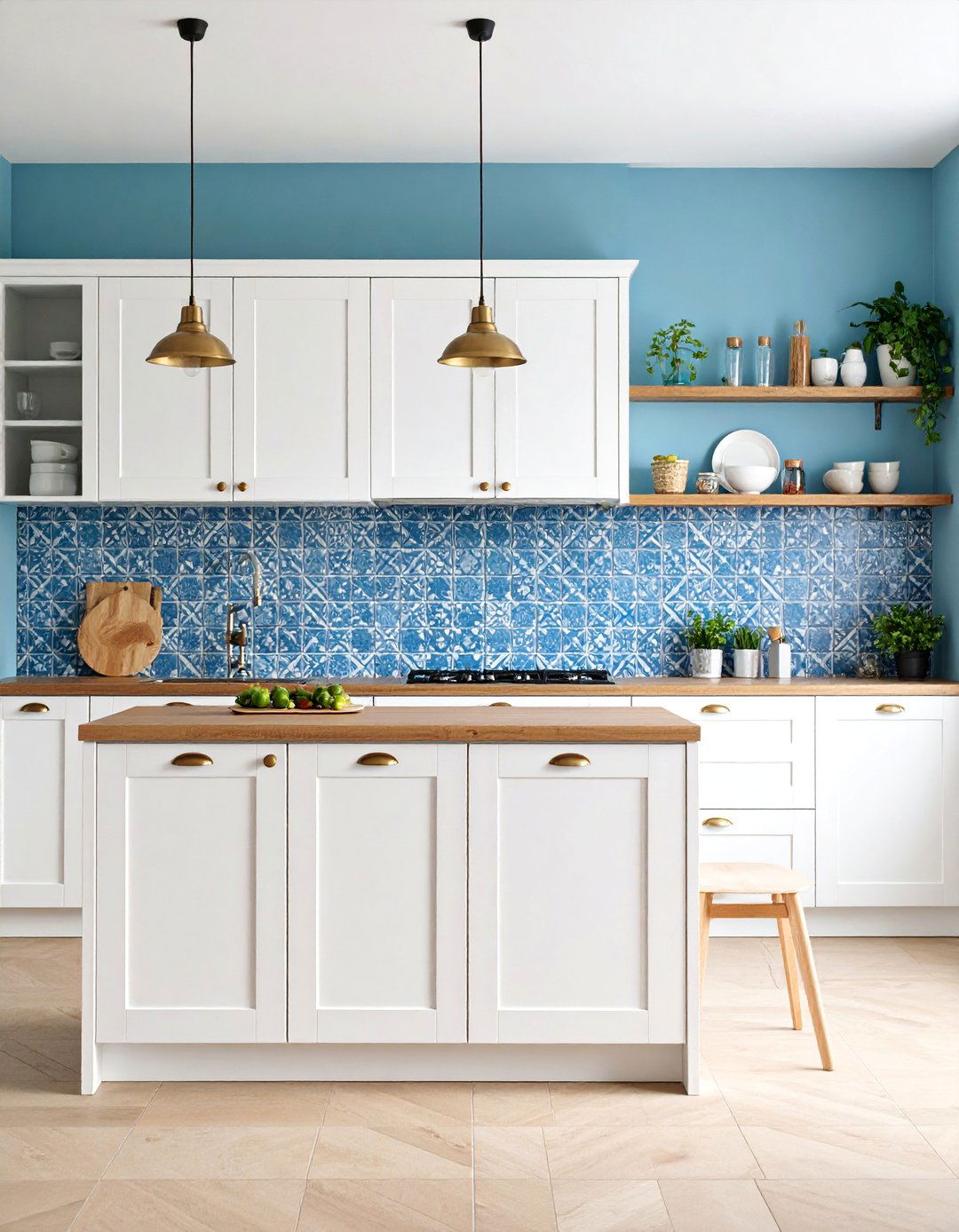
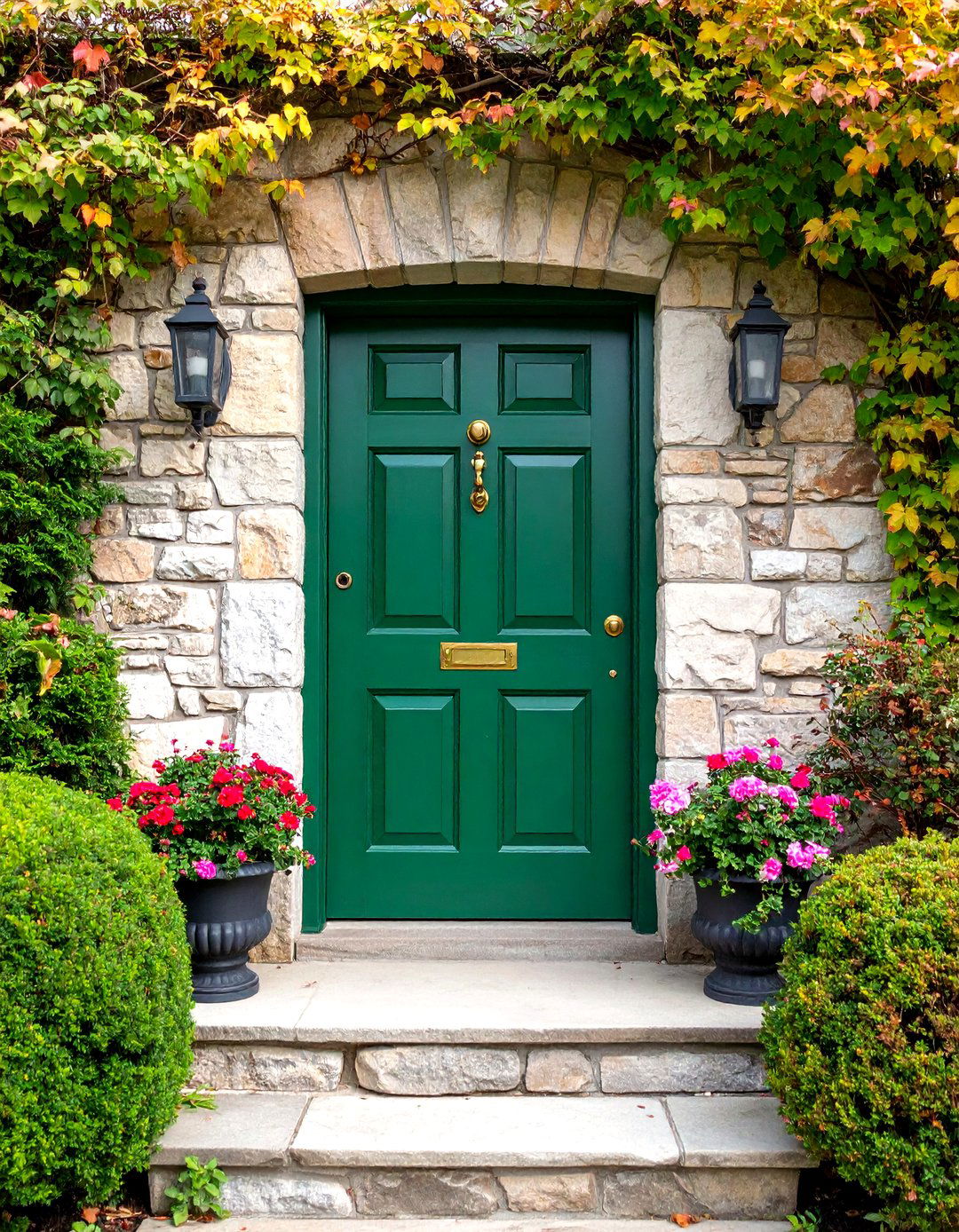
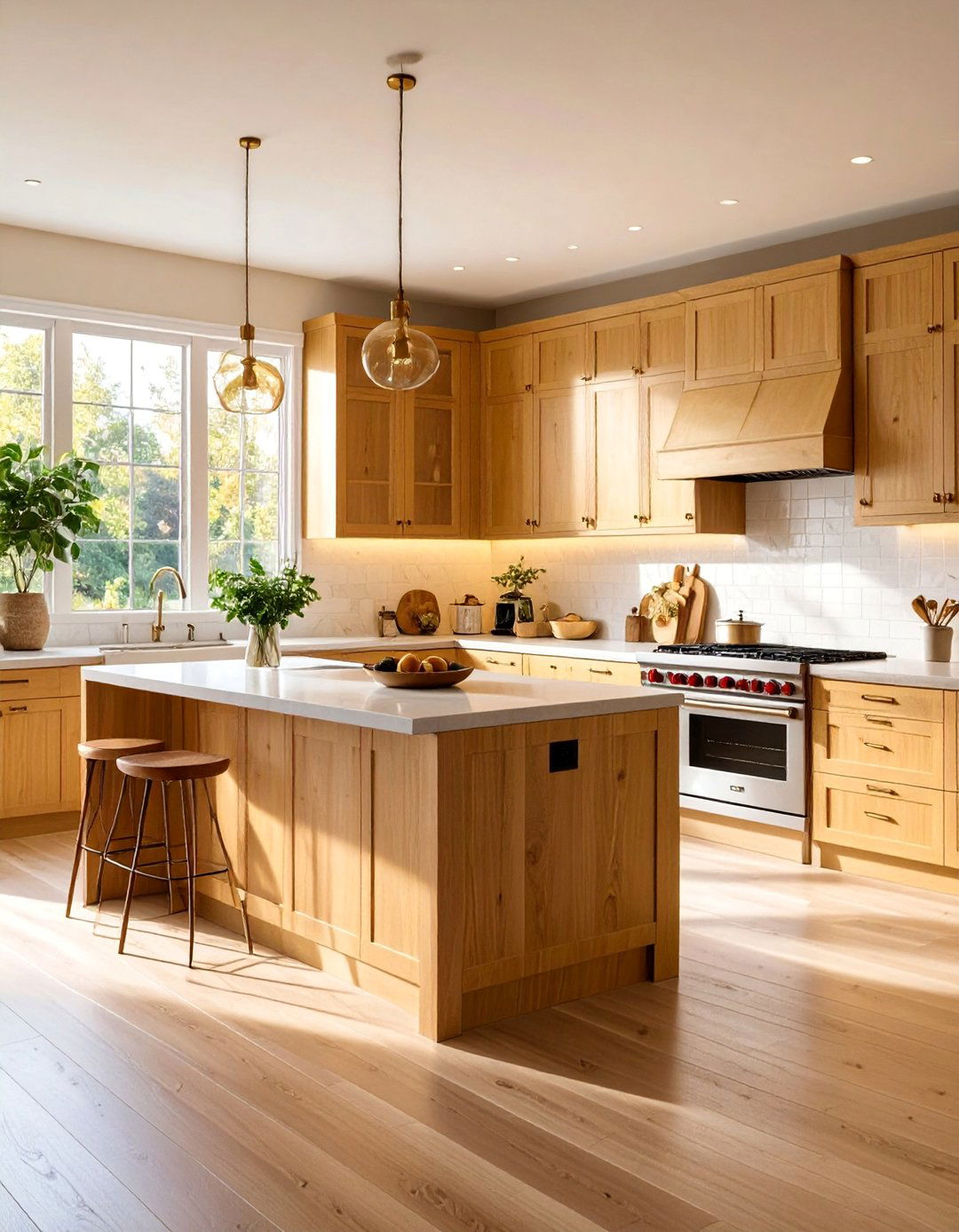

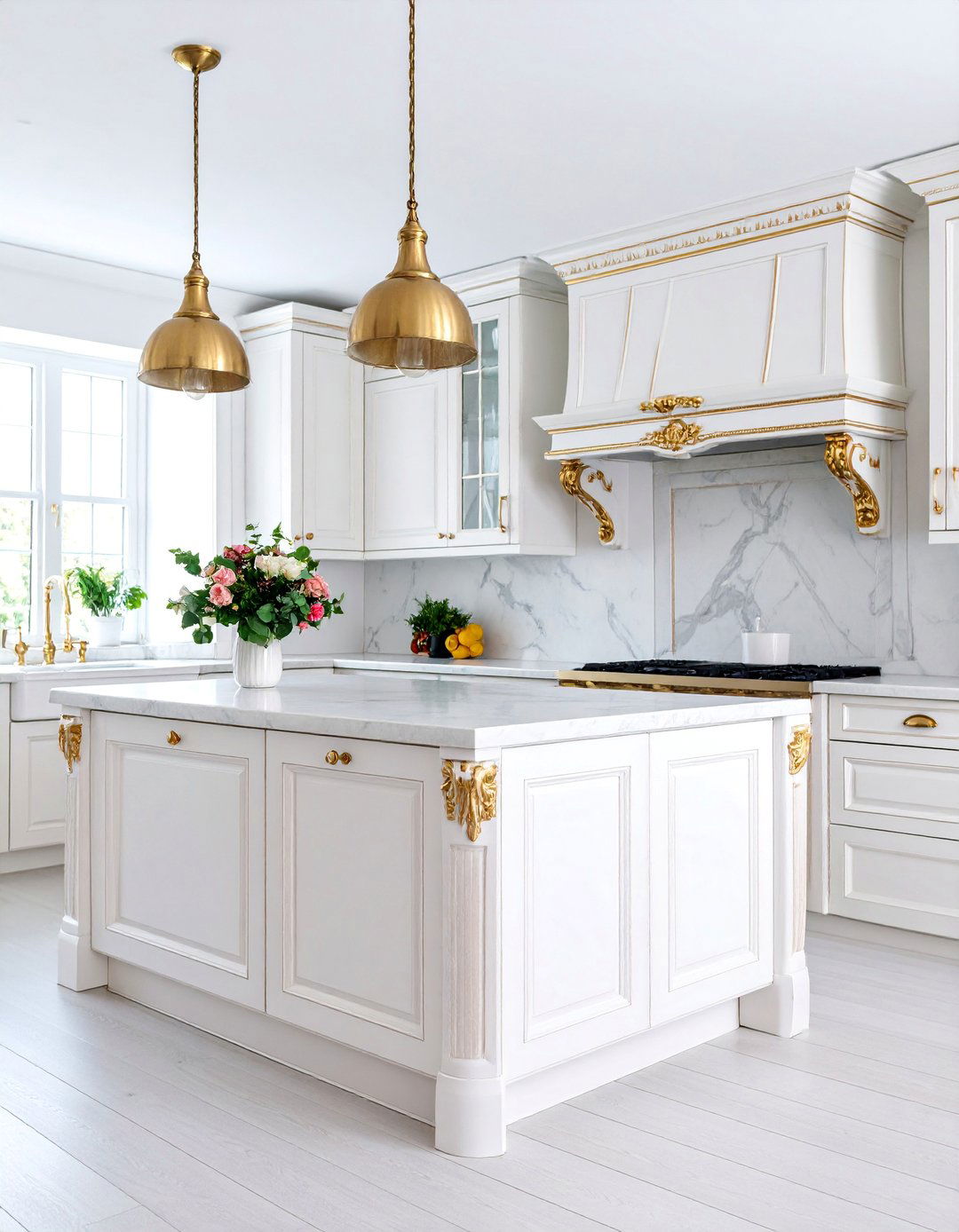
Leave a Reply